#2020 Ford Focus Specifications
Explore tagged Tumblr posts
Text
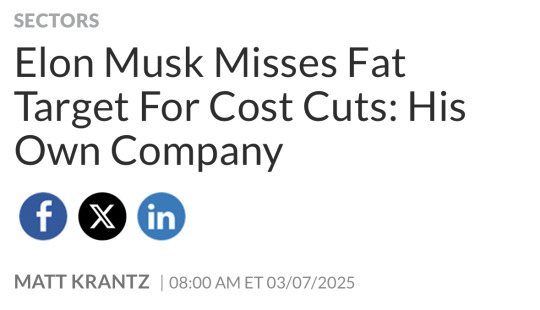

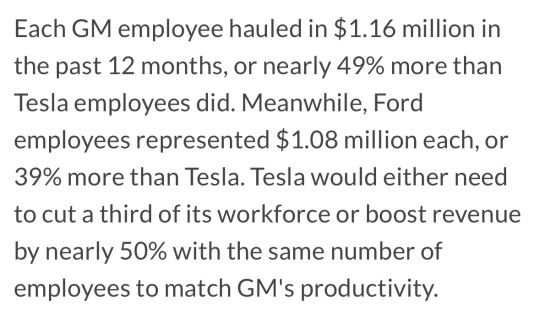
Tesla had an early market advantage and (until recently) a pretty strong brand. Their playbook was a top-down pricing approach starting with more expensive cars with higher profit margins and then use that to fund development of more affordable mass market models.
In 2012 Musk claimed a $30k EV was a few years away
2016 he more publicly promoted the top-down pricing playbook (promoting it as a “secret master plan”)
2018 Musk claimed a $25k EV was 3 years away
2020 Musk announced a $25k EV would be released in 2023
2021 Musk hinted the mass market EV might be fully autonomous and would “probably” arrive in 2023
2022 the project was put on hold to focus on cybertruck and AI development
2023 Musk suggested a new next-generation program was in development but avoided giving a specific timeline
2024 reports of a lower cost model 2 in with factories in China and Mexico would deliver in mid to late 2025
March 2024 Reuters reported the low cost EV project was canceled (Musk denies)
btw Musk has made similar claims around missions to Mars with similar slipping timelines (in 2019 Musk was still claiming a 2024 mars mission timeline). Similar claims for hyperloop, fully autonomous vehicles, nuralink.
When Cybertruck was announced in 2019 a lot of the hype was that it would have a sub $40k option and would launch in 2020. After multiple year delays when it launched in 2023 the lowest price option was $61k over 50% higher than originally claimed.
All of this hype keeps stock price rising.
But while Musk has been struggling to operationalize over the last dozen years, Ford and GM have been investing billions into EV R&D (around $30B) and will likely be able to leverage their existing productivity to release actually lower cost EV models starting this year.
Tesla on the other hand has invested $10B into achieving FSD (full self driving) which would be offered to Tesla owners at a subscription basis of $99/month.
Last year in a trial of FSD (it’s not actually FSD but that’s what it’s marketed as) only 2% of Tesla drivers in the trial kept it after a month.
I don’t invest in stock market but if I did I would be betting on Tesla to tank over next 12 months.
it’s been kept afloat by Musks hype machine, but when Ford and GM actually start releasing EVs at lower cost that people care about it’s over for Tesla (unless government does a bail out, which I guess is possible but who knows, it’s not like Trump is known for his loyalty).
31 notes
·
View notes
Text
Top 10 Generative AI Consulting Companies to Watch in 2025

In the era of digital transformation, Generative AI is reshaping industries by enabling innovation, improving efficiency, and creating personalized customer experiences. As businesses seek to leverage this groundbreaking technology, Generative AI consulting companies have become essential partners in driving success.
Here are the top 10 Generative AI consulting firms of 2025, each excelling in delivering tailored solutions to meet dynamic business needs.
1. AIVeda
Rate: $50-99/hr
Employees: 100-250
Founded: 2020
Headquarters: San Francisco, USA
Key Clients: Leading healthcare providers, EdTech companies, and Fortune 500 enterprises
AIVeda is a frontrunner in Generative AI consulting, offering cutting-edge solutions across industries like healthcare, finance, and education. Specializing in AI Chatbots, Enterprise LLMs, Conversational AI, Social Media Analytics, and AI-driven content generation, AIVeda empowers businesses to achieve measurable results. Their expertise lies in delivering scalable and customized AI solutions that drive innovation and foster growth.
2. GlobalNodes.ai
Rate: $25-49/hr
Employees: 51-100
Founded: 2015
Headquarters: San Francisco, USA
Key Clients: Aisle 24, NVMS, TFSB
GlobalNodes.ai offers end-to-end AI model development and strategy consulting. With a strong team of data scientists and AI experts, they serve industries like retail, healthcare, and logistics. Their focus on ethical AI and scalable solutions makes them a preferred partner for businesses seeking impactful transformation.
3. Accenture AI
Rate: $100-199/hr
Employees: 1000+
Founded: 1989
Headquarters: Dublin, Ireland
Key Clients: Unilever, Google, Marriott International
Accenture AI leverages advanced Generative AI technologies to create transformative solutions in automation, content creation, and analytics. Their extensive industry expertise helps businesses achieve agility, innovation, and enhanced customer experiences.
4. IBM Watson
Rate: $100-250/hr
Employees: 1000+
Founded: 1911
Headquarters: Armonk, NY, USA
Key Clients: Anthem, Mayo Clinic, H&R Block
IBM Watson is renowned for its advanced Generative AI solutions, including natural language processing and predictive analytics. Their tools empower businesses to streamline operations, make data-driven decisions, and improve user engagement across multiple sectors.
5. Deloitte AI Institute
Rate: $100-300/hr
Employees: 1000+
Founded: 1845
Headquarters: London, UK
Key Clients: Intel, MetLife, Morgan Stanley
Deloitte AI Institute offers cutting-edge Generative AI solutions to automate workflows and create personalized customer experiences. Their expertise in data analytics and machine learning helps businesses achieve digital transformation at scale.
6. Boston Consulting Group (BCG) GAMMA
Rate: $200-350/hr
Employees: 1000+
Founded: 1963
Headquarters: Boston, MA, USA
Key Clients: Pfizer, Ford, Samsung
BCG GAMMA is a leader in AI-powered decision-making and Generative AI applications. They provide innovative solutions for content generation, predictive analytics, and operational efficiency, tailored to specific business challenges.
7. PwC AI Lab
Rate: $150-300/hr
Employees: 1000+
Founded: 1998
Headquarters: New York, NY, USA
Key Clients: Uber, HSBC, Starbucks
PwC AI Lab focuses on creating industry-specific Generative AI solutions. From automated content creation to generative design, they help businesses optimize performance and accelerate digital transformation.
8. Fractal Analytics
Rate: $50-99/hr
Employees: 1500+
Founded: 2000
Headquarters: New York, NY, USA
Key Clients: Microsoft, Google, HP
Fractal Analytics specializes in AI-driven insights and content automation. Their Generative AI solutions empower businesses to improve decision-making, enhance customer experiences, and streamline operations.
9. HCL Technologies
Rate: $100-199/hr
Employees: 159,000+
Founded: 1976
Headquarters: Noida, India
Key Clients: Deutsche Bank, Xerox, Merck
HCL Technologies integrates Generative AI into automation workflows to enhance productivity and efficiency. Their AI-driven solutions for predictive modeling and content generation are widely adopted across industries.
10. Capgemini
Rate: $100-200/hr
Employees: 270,000+
Founded: 1967
Headquarters: Paris, France
Key Clients: Volvo, Airbus, Vodafone
Capgemini delivers Generative AI solutions for content creation, customer engagement, and advanced analytics. With their expertise in AI and data-driven technologies, Capgemini supports businesses in achieving seamless digital transformation.
How to Select a Generative AI Consulting Company for Your Requirements
When choosing a Generative AI consulting firm, consider the following:
Industry Expertise: Ensure the firm has a track record of success in your sector.
Technological Proficiency: Look for firms with expertise in Generative AI frameworks and tools.
Custom Solutions: Opt for a company that provides personalized solutions aligned with your goals.
Scalability: Ensure their AI solutions can adapt to your business growth.
Client Reviews: Check case studies and testimonials to gauge their credibility.
6. Budget Compatibility: Choose a firm that aligns with your financial plan without compromising quality.
Conclusion
The Generative AI consulting landscape in 2025 is competitive, with companies like AIVeda setting benchmarks for innovation and success. With their focus on delivering scalable and tailored AI solutions, AIVeda is leading the charge in helping businesses unlock the true potential of Generative AI.
By partnering with the right consulting company, businesses can achieve unparalleled growth, enhance customer engagement, and stay ahead in an AI-driven world.
0 notes
Text
Permanent Magnets Market Size, Share And Trends Analysis Report 2024 - 2030
The global permanent magnets market was valued at USD 22.18 billion in 2023 and is projected to expand at a compound annual growth rate (CAGR) of 8.7% from 2024 to 2030. One of the key factors driving this growth is the increasing focus on renewable energy sources, such as wind and solar energy. Permanent magnets play a crucial role in enhancing the efficiency of wind turbine generators, which is contributing to the market's positive trajectory. Specifically, rare earth magnets, such as Neodymium Ferrite Boron (NdFeB), are being extensively used in wind turbines due to their ability to increase the reliability of turbines while also reducing maintenance costs. This, in turn, is expected to fuel the demand for permanent magnets in the renewable energy sector throughout the forecast period.
In the U.S., the permanent magnet market is expected to grow at a faster rate compared to its ferrite magnet counterpart, driven by their widespread use in high-tech applications. These include sectors such as robotics, wearable devices, electric vehicles (EVs), and wind power. The automotive industry in the U.S. has experienced steady growth since the economic downturn of 2008-09. A key trend contributing to this growth is the rising adoption of plug-in electric cars, which is largely driven by the advanced technology and high-performance electric vehicles offered by leading manufacturers like Tesla, Chevy, Nissan, Ford, Audi, and BMW. Tesla, for example, was one of the first electric carmakers to integrate neodymium magnets into its electric motors, starting in early 2018. This shift toward using high-performance magnets in electric vehicle motors is expected to significantly drive the demand for permanent magnets in the U.S. market.
Overall, the growing applications in energy and transportation sectors, combined with the advancements in technology, are expected to accelerate the adoption of permanent magnets, boosting market growth globally, particularly in the U.S.
Gather more insights about the market drivers, restrains and growth of the��Permanent Magnets Market
Regional Insights
Asia Pacific
In 2023, the Asia Pacific region dominated the global permanent magnets market, accounting for nearly 75.0% of the total revenue. This region is considered the manufacturing hub of the world, with countries like China, Japan, and South Korea playing a pivotal role in the production of a wide range of products, including automotive and electronic devices. These countries have become significant centers for the production of computer hardware devices, such as hard disks, computer chips, and microprocessors, all of which heavily rely on permanent magnets for their functionality. As a result, the demand for permanent magnets continues to grow, driven by the electronics and hardware manufacturing industries in the region.
Europe
Europe is projected to become the second-largest regional market by 2030, although it faced challenges in recent years. The region saw a significant decline in industrial production in 2020, mainly due to the economic slowdown and political uncertainties, including Brexit. Additionally, the economic downturn was exacerbated by the COVID-19 pandemic, which led to widespread lockdowns and disrupted supply chains. However, as the economy recovers, Europe is expected to regain its growth momentum, bolstered by innovations and a focus on green energy and sustainability.
North America
North America accounted for a notable market share in 2023, although the COVID-19 pandemic had a severe impact on the region's supply chains. According to the International Monetary Fund, North America's GDP contracted by around 7% in 2020, reflecting a significant downturn in the output of key industries, including automotive & transportation, electrical & electronics, and aerospace & defense. However, with the resumption of economic activities post-pandemic, the demand for permanent magnets, particularly in electric vehicles and renewable energy sectors, is expected to rise.
Middle East & Africa
The Middle East & Africa region saw a decline in its market revenue in 2023, mainly due to the economic pressures exacerbated by the pandemic. In 2020, the region’s GDP contracted by approximately 4.2%, with Gulf countries particularly affected by rising deflationary pressures. Despite this, the demand for permanent magnets in the region is expected to gradually recover as economic conditions stabilize and industrial activities resume.
Browse through Grand View Research's Advanced Interior Materials Industry Research Reports.
• The global chemical mechanical planarization market size was estimated at USD 6.01 billion in 2023 and is anticipated to grow at a CAGR of 7.2% from 2024 to 2030.
• The global aluminum wire market size was estimated at USD 31.95 billion in 2023 and is projected to grow at a CAGR of 6.1% from 2024 to 2030.
Key Companies & Market Share Insights
The permanent magnets market is highly competitive, with several prominent companies operating globally. Some of the key players include:
1. Hitachi Metals Ltd.: This company operates across three main business segments—automotive-related products, electronics-related products, and infrastructure-related products. Hitachi Metals offers a broad portfolio of products, including cutting tools, molding materials, exhaust components, magnets, LCD displays, semiconductors, medical equipment, and more. Its diverse range of products contributes to its strong position in the market.
2. Shin-Etsu Chemical Co., Ltd.: A major player in the industry, Shin-Etsu operates through several business segments, including PVC, silicones, specialty chemicals, semiconductor silicon, and electronics & functional materials. The company’s diverse product range, particularly in the materials used for semiconductor manufacturing, positions it well within the permanent magnets sector.
3. Ningbo Yunsheng Co., Ltd.: This company specializes in developing and manufacturing sintered and bonded NdFeB, AlNiCo, and SmCo magnets, as well as magnetic assemblies and electric motor products. It also focuses on research and management in sectors such as automobile motors, smart technology, and neodymium magnets.
Emerging Market Participants:
1. Earth-Panda Advance Magnetic Material Co., Ltd.: This company manufactures a wide range of permanent and flexible magnets, including ceramic and ferrite magnets. Its product portfolio includes items like extruded magnet strips, rubber magnet sheets/rolls, magnetic products, and magnetic toys. The company caters to various sectors, including electric motor seals, refrigerator seals, and office automation magnets.
2. Ninggang Permanent Magnetic Materials Co., Ltd.: Established in 2003 and based in Ningbo, China, this company produces sintered SmCo materials, rubber magnets, plastic injection magnets, bonded NdFeB magnets, and ferrite magnets. It is known for its advanced production technologies and strict quality control systems, which help ensure the delivery of high-quality permanent magnets in various shapes to meet industry demands.
Key Permanent Magnets Companies:
• Adams Magnetic Products Co.
• Earth-Panda Advance Magnetic Material Co., Ltd.
• Arnold Magnetic Technologies
• Daido Steel Co., Ltd.
• Eclipse Magnetics Ltd.
• Electron Energy Corp.
• Goudsmit Magnetics Group
• Hangzhou Permanent Magnet Group
• Magnequench International, LLC
• Ningbo Yunsheng Co., Ltd.
• Ninggang Permanent Magnetic Materials Co., Ltd.
• Shin-Etsu Chemical Co., Ltd.
• TDK Corporation
• Thomas & Skinner, Inc.
• Vacuumschmelze GMBH & Co. Kg
• Ugimag Korea Co., Ltd.
• SsangYong Materials Corp.
• Pacific Metals Co., Ltd.
Order a free sample PDF of the Permanent Magnets Market Intelligence Study, published by Grand View Research.
#Permanent Magnets Market#Permanent Magnets Market size#Permanent Magnets Market share#Permanent Magnets Market analysis#Permanent Magnets Industry
0 notes
Text
So I was thinking about this post and wanted to add some fun Family Lore, this time RE: my sister's vehicles. Fun fact that will be relevant later: I was wrong about my & my dad's charcoal gray '89 cars wildly predating affordable digital cameras. (lol adhd time blindness go brrr)
So I'm 40 years old and the tofu toaster is the 4th car I've owned. My "first vehicle" was actually a brown GMC truck my dad bought for my use, then my (3 years younger) sister's use once she turned 16 and I got a car, then farm use. So, 19 when I purchased my first car, 40 now. 3 cars spanning 21 years, meaning I average about 7 years per vehicle.
I don't recall exactly when she purchased her first car, it was either at 18 or 19. I'll be generous and call it 19 for the sake of Math. Here are the cars she's owned:
1987 Pontiac Catalina 1995 Chevy Bonneville 1998 Pontiac Alero 2002 Ford Focus wagon 2005 Chevy cobalt 2013 Hyundai Tucson (current vehicle, acquired 2020)
So, 2005 - 2020 is 15 years and 5 vehicles. 2005-2023 is 18 years and 6 vehicles.
So, my sister averages roughly 3 years per car.... with any luck, this current car will last her a while longer. Honestly though, none of her car deaths were her fault, and only 2 of them were mechanical failures. My sister just has spectacularly terrible luck with vehicles.
Per my sister:
"Catalina was when I was headed to DQ and the other people were headed from DQ. They turned in front of me while I was going 60mph and I t-boned them. But it was their fault."
"Bonneville died died. Battery and whatnot. Sold it to a dude who brought it back and demanded he money back because the trunk wouldn’t open. But it was below freezing out. Then he came back the next day when it wasn’t as cold and the trunk opened. So he bought it again."
Alero was taken out by a tree that was felled by a storm, and it took out both my sister's and her husband's vehicle at the same time.
"Focus was taken out by an old lady in a Walmart parking lot. She totaled 3 cars and barely scratched her BMW. That was the week of my wedding. She meant to hit the brakes and hit the gas instead. I straight up laughed because that’s just my luck."
Cobalt was leaking gas
For funsies, here is sister, a guy she was (I think) dating at the time, and his twinnish car:
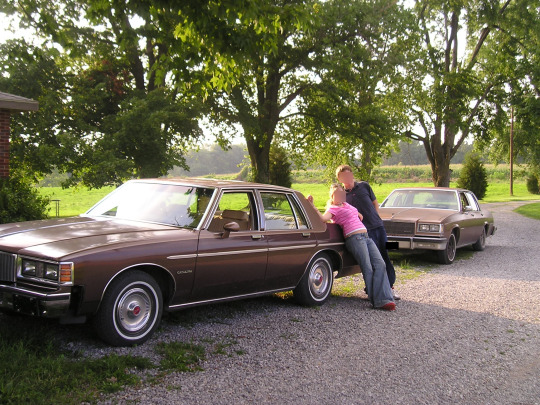
BONUS: I was digging in my archives for this specific photo and found these photos (circa ~2005), which is proof of... well, one of the charcoal gray '89 cars. Not sure if that's mine (grand marquis) or dad's (crown vic).

AND!
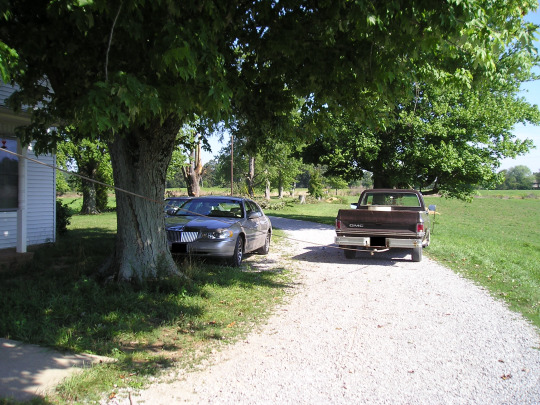
This is the tree I would park under
That's actually my mom's car under the tree, since the tractor would block the car's access to the garage for the duration of the project that's going on there
Behind mom's car is either the other charcoal gray '89 vehicle OR sister's Catalina. I really can't tell.
The brown GMC truck is the one that was first mine to drive, then sister's to drive, then farm truck. There's really no telling if it was already a farm truck by that time or simply borrowed for the purpose of this project, which was removing the unused well. We actually recovered the bricks since they were made at a local brick factory that has long since closed down, and re-used them for other projects, like a small patio. Also some decorations.
Extra Bonus:

Now you know what it looked like inside the well!
If you know me outside of Tumblr, don't tell my mom
I said goodbye to my old car last night. Vivid green 2012 Hyundai Accent hatchback. That thing had stellar fuckin gas mileage (for a non-hybrid anyway, I could squeeze like 40mpg out of it if I tried), hauled around way too much shit, played FAFO with black ice, was stolen in Amarillo, TX and recovered south of Oklahoma City, OK - and for context, I live in Indianapolis - back in 2018, and transported many friends and even some coworkers. It also has had kernels of dry field corn in the floorboard for the past two years. Oh, and I broke the frickin passenger side mirror by backing out of the garage too close.
Her name was Arachnaverde because she was green and I kept an anatomically incorrect spider skeleton (halloween decoration) on the dashboard. Spood's job was to let me know when I was taking a turn too fast. He would skitter away if I did.
Prior to Arachnaverde, I had a 1994 Oldsmobile Cutlass Supreme that I called Madame Blueberry. She was a lovely teal color, had two doors, and I once forgot an entire watermelon in the back floorboard in college and it rotted and stank so badly. -4/10 do not recommend. Also her trunk had loose soybeans from when I took a few dried soybean plants for some reason or another. ADHD be like that sometimes.
Prior to Madame Blueberry, I had an unnamed charcoal gray 89 Mercury Grand Marquis. This car had one interesting anecdote, and 3 notable events.
In the long long ago when I was still in junior college (2 year college for people who live in states that don't fuck with junior colleges), I left it overnight in the college parking lot for some reason I no longer recall. When I retrieved it in the morning, someone had used car window paint to write "HOOPTY" on the back windshield. To be fair, it was.
That car was how I learned not to leave a can of silly string in a hot car. Did you know if a can of silly string gets hot enough it will straight up explode? I didn't until I found a really messy plastic bag and blue spatters all over the roof of my car.
I used to park under a specific tree in front of the house, because I lived with my parents on a farm, and the garage was for my mom's vehicle, no one else's. Dad's main ride parked in the patch of ground between the barnyard fence and the garage (dad's parking spot, mostly), and the farm truck parked in the barnyard. Anyway, point is, I parked under a tree which worked quite well for many years except at the very end a large fragment of dead tree pierced my car *right* in front of the hood so I had a rough rectangle of Missing Car for the tail end of my ownership.
Anyway, I've known for months that I needed to get a new car. Needed new front struts, a replacement sensor in the steering column, new back brakes, new front tires.... I tried back in May but for some reason the car I found just didn't vibe with me (Mitsubishi Mirage). It was kinda noisy, very basic. Also very cheap.
Last week, the stars aligned and I found a hopeful prospect with low mileage, decent mpg, and within my budget.
So now I have a new-to-me brick of tofu (white Kia Soul 2020).
I have said my farewells to the green beast, and look forward to what kind of adventures I'll get into with the as-of-yet-unnamed toaster.
So far the best name I've come up with is Tofungus because I am awful. I definitely want to give it a black horizontal stripe and add the "Fujiwara Tofu Shop" decal to the side because i'm a fuckin weeb and also did you know there's a sequel to Initial D this season? I'm enjoying it.
19 notes
·
View notes
Text
Fandom and their power in social media.
Let's start with what a 'fan' means. According to Hills (2002), a 'fan' is fixated on a specific actor, celebrity, movie, television show, or band. Most of us are fans of something, be it K-Pop, C-Pop, Anime, or even comics. The title "fandom" is produced by gathering these fans with common interests. Therefore, through a fandom, the fans can build their community where they can express themselves when interacting with the people with common interest (Subcultures and sociology, n.d.).

Fandoms are mostly criticized for being obsessed with their favorite(s). Well, not necessarily. It does not apply to everyone, although there are fandoms who have unhealthy obsessions towards their favorite(s). Some fans or fandoms are toxic, too, and that makes the media look down upon fandoms. Nope, I will not name any fandom and create havoc here. Let us pass this unit in peace, okay!? Okay!~
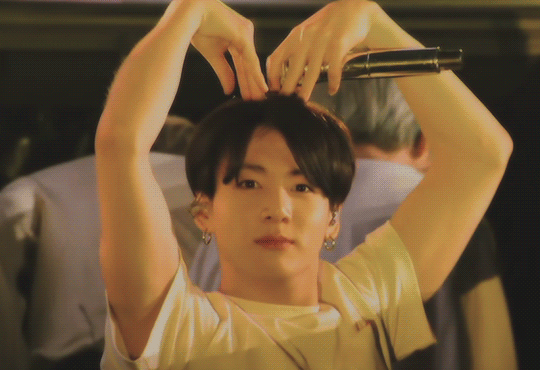
Anyway, let us go back to the topic of the week.
The power of fandom in social media.
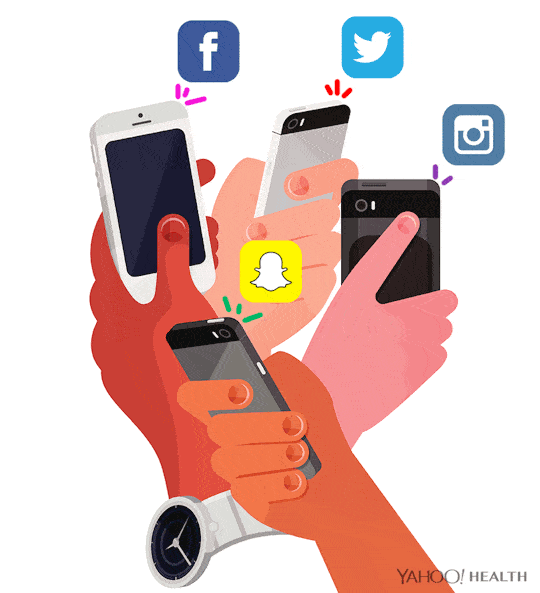
As discussed earlier, fandoms are generalized as obsessive individuals who bring nothing to society but "going crazy" for their favs. But, let's focus on the good side that's often missed by people with such mindset.
In June 2020, Black Lives Matter allowed the fandom of BTS, ARMYs, to help and support the movement. The Black Lives Matter Foundation confirmed that BTS and their label donated $1 Million dollars to support the campaign. In less than 24 hours, ARMYs used their influence by supporting the movement by raising over 1 Million dollars, too, matching the amount BTS and their label donated. The fundraising was successful as a Twitter account (as shown in the screenshot below) took the lead and helped create the hashtag #MatchAMillion, to request ARMYs to help donate and to help spread the fundraising for the movement. Hence, the fundraising made it to several news articles highlighting the fandom's success and positive power.

Source: https://twitter.com/OneInAnARMY/status/1269793116023926786?ref_src=twsrc%5Etfw%7Ctwcamp%5Etweetembed%7Ctwterm%5E1269793118339072003%7Ctwgr%5E490b763ba6cfde48e4d1b1ba00999ce680616b46%7Ctwcon%5Es2_&ref_url=https%3A%2F%2Fvariety.com%2F2020%2Fmusic%2Fnews%2Fbts-army-matches-black-lives-matter-million-dollar-donation-1234627455%2F
Although BLM was not the only successful campaign that the ARMYs as a community have helped to fundraise, it somehow proves that we, as a fandom, are helpful in many ways, especially in spreading words and influencing others to do the same (good things). This was also because the fandom is organized and filled with diversity.
Through social media, especially Twitter, as most fandoms are on the platform, their presence made it easier for interaction and words to spread easier. The involvement of fans, for instance, on social media, makes it possible for media information to be easily shared, or as Jenkins, Ford, and Green (2013) put it, "spreadable."
Conclusion
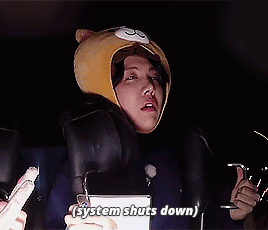
To summarize, the power of fandoms in social media should not be looked down upon as they influence the media and increases fan culture by creating their own identities on social media to interact with people with the same interests. As fans, we should use our voices to break stereotypes of what the poeple thinks about fandoms.
References
Hills, M., 2002. Fan cultures. Routledge, London.
Jenkins, H., Ford, S., Green, J., 2013. Spreadable media: creating value and meaning in a networked culture. NYU Press, New York.
Subcultures and sociology (no date) Grinnell College. Available at: https://haenfler.sites.grinnell.edu/subcultural-theory-and-theorists/fandom-and-participatory-culture/ (Accessed: November 11, 2022).
4 notes
·
View notes
Text
Popularism and its discontents

(Is no one going to make the obvious joke?)
***
Anyway, "popularism" is the hot button term among lefty technocratic circles popularized by the likes of David Shor and Matt Yglesias. You can read Ezra Klein's very thorough interview on the subject in the NYT. ( https://www.nytimes.com/2021/10/08/opinion/democrats-david-shor-education-polarization.html or use Wayback machine to circumvent the paywall.)
Popularism is a shorthand for the belief that the Democratic Party, when it is trying to get politicians elected, should focus on policies that are popular and downplay things that are unpopular and irrelevant. Lot's of commercials about cheaper prescription drugs and border enforcement, less talking about systematic racism and anti-capitalism. And by popular we mean "tested in polls, and especially among white voters over fifty with no college degree."
It's obviously a response to perceptions of the 2016 Clinton campaign and the 2020 Democratic primary, and it leans heavily on the success of the Biden campaign, and the specific tactics Obama used in his two successful elections (where he was anti-gay marriage and cautious on immigration.)
Shor and Ygs and others have pushed this tactic in a very loud way, to counter what they see as groupthink among center-left staffers and activists in institutional non-profits, who value staying in like over effectiveness. And fair enough, we can all see where they are coming from.
But predictably, popularism has come in for a lot of criticism. Sometimes issues are more popular after they have passed and begun providing benefits. Sometimes you want to pass a policy because you believe in it, that's why you got elected after all. Sometimes you need to get your base excited and elections aren't entirely about the median voter. Republicans will say bad things about us no matter what we do (they certainly don't hesitate to call us socialists even when Democrats are like, de-regulating zoning restrictions.) Why do Republicans keep saying unpopular things but still winning elections anyway? And the rhetoric politicians use themselves can move public opinion. Playing to the crowd will only lead to centrist milquetoast policy that doesn't change America's underlying problems.
(Since they are always-online-political-pundits, the popularists of course have rebuttals to all of these questions.)
Most importantly I think, the line between "who is a political staffer that has an obligation to stay on message" and "who has responsibility to more people than just today's electoral campaign" is pretty vague, and I don't see why, say, the Ford Foundation which has been around for most of a century would feel obligated to change their message to fit the Harris 2024 campaign's needs. It's not clear who Shor and Ygs are really talking to.
Popularism is just one particular strategy, and I am sure if it gets lots of buy in, eventually it will have one high profile embarrassing loss. I do not recommend anyone put all their credibility eggs in their one basket, or else you'll become one of those people parsing all the data with a fine-tooth comb to say "if you look at this cross tab and that local trend, you'll see really we overperformed the fundamentals and popularism has never failed, it can only be failed."
You don't want to be that.
There is a more fundamental point, that these pundits risk losing for getting lost in the ideological weeds.
"Candidates should try to do what works."
The parsing of all messaging by all Democrats running for office to be acceptable to sensitive college-degree holders who live in big cities... has not paid dividends for the success of the party. The emphasis on supporting idealistic and edgy symbolic causes du jour over what bills can actually be passed and deliver results to voters this year, does not seem to make any situation better when you look at the results. It's not entirely fair to say "a decade of policing speech got Trump elected" but it's at least fair to say that attitude did nothing to *stop* Trump from winning, and the most reviled candidate in the 2020 Democratic primary from winning as well.
I don't think there is One Consistent Plan that will always win you elections. But a serious movement should care about what does and doesn't win. And when one tactic doesn't seem to be helping, it should be willing to drop that and try other tactics. "Winning" is not solely confined to elections, but it should be mostly about "policy change." You should care about what tactics change policy, and lead to better policy rather than irrelevant or badly designed policy. Popularism is a nod towards that, but it's really not the end all and be all of being politically responsive. Do it for a while if it works, but be ready to try something else when it reaches diminishing returns.
24 notes
·
View notes
Text
BNHA X CARS
So, this is basically BNHA Street racer AU. But to be more precise I’m picking the cars for the characters from BNHA. Because cars have characteristic, it has personality and it describes you as a person. Not just based from the body but the engines and the car as whole. So, this is my pick of cars for the character of BNHA. If you have different opinion let me know, I would love to hear all of your thoughts and if you use my list you can go ahead and use it (But please do tell me, because hearing it will be my vindication and that would make me really happy).
Part 1 For the boys
I’m going to divide it into 2 cars. One is for daily drive/Sports car and the other is The Supercar. The Sports car will describe them as characters individuals. While the Supercar will describe their full potentials.
Midoriya Izuku:
Midoriya Izuku, The protagonist of the Anime. He is too good of a boy to mess around street Racing. The Color for his car is obviously Green, in that case I Recommend Him.
Sport car/ Daily Drive:
The Mitsubishi Eclipse GSX.
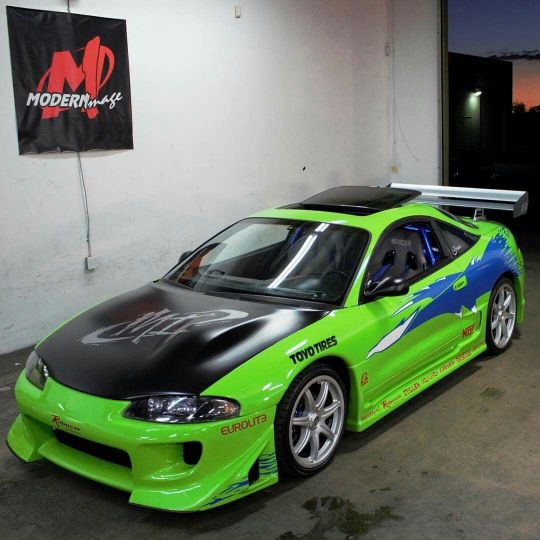
To be more specific. It is Brian’s First car In the Fast and the furious franchise (R.I.P Paul Walker). This car is one of the Tuners favorite car to modify. It is run by 4G63 Engine, it is the same Engine that run an EVO F*CKING LANCER which is one of the finest cars that has been made on earth (Minus the Turbo). So it plays well with the whole inheritance thing with All Might.
Supercar:
For the supercar, I would Recommend McLaren 675LT
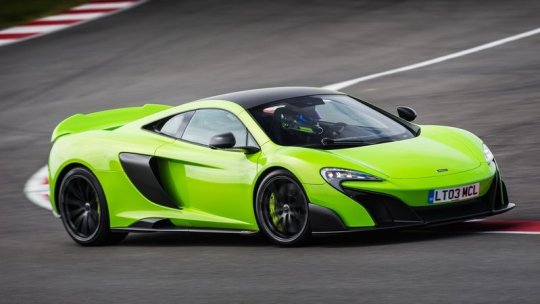
This car Look Great In green. The whole characteristic of this car reminds me of Midoriya. This car shown how it can blend to the society, how it was able to move fast and aggressively while at the same time maintaining Elegance. This car looked slim, but its performance is something else 3.8 L V8 Twin Turbo Rear Wheel Drive (RWD) Gives the ability for the driver to drive like a maniac. The car produces more or less 675 Horsepower (Just like its name) and can go to 0-100 Km in 2.9 Seconds and a top speed with 330 Km/h (205 Mph).
Bakugo Katsuki:
For Bakugo, His car has to be loud and Fast! He needs a car that’s intimidating. For the color I’m Thinking Red, Yellow or Black. But since the car need to look Antagonizing, I’m going with black. So, the car that I propose.
Sport Car/ Daily Drive:
Dodge Challenger SRT Hell Cat 2015

This car is a 6.2L Hemi V8 Supercharged. The roars in this car is nothing short. This car is for sure is Intimidating. The roar of the engine is equivalent to Bakugo’s Roar of explosive anger. I was considering the newer one like the SRT Redeye Hellcat or even The Demon. But the demons is more of the inner demon screaming trying to get out. It needed a Rumbling sound of the V8, The insane roar that is deafening.
Supercar:
For the Supercar, it is very difficult. I can choose Hyper cars but they just felt a bit too well mannered compared to Bakugo. But I’ve given a lot of thought and the only car that fits is This
Pagani Zonda R

This car is basically an f1 with a two-seater and a roof. This bad boy is a track only car. So, it is “Street Illegal!!” But that won’t stop Bakugo for using this beauty. This car on high rev speaks will be all the explanation needed on the reason why I chose this car. A car with 700 BHP and only weight 1,070 Kg (In comparison Ford focus weight 1,471 Kg) Which is like a feather.
Todoroki Shoto:
For Todoroki His car has to be cool, matured and Luxurious but also High performance. I’m a bit mixed up with the colors Whether I should make it blue or white or red. But since I cant decide I leave it in the ‘Grey’ area. Get it? Ill just get on with it.
Sport Car/ Daily Drive:
Aston Martin DB11

Aston Martin is well known on it’s Luxury and History. Which fits Todoroki’s Prince aura/Characteristics. The performance is also nothing short, Aston Martin is also well known to make a brilliant Engine for racing. A twin turbocharged V12 Produce 600 BHP with a top speed 201Km/h (125Mph).
Supercar
For the Super car, I think Lamborghini Huracan Performante.
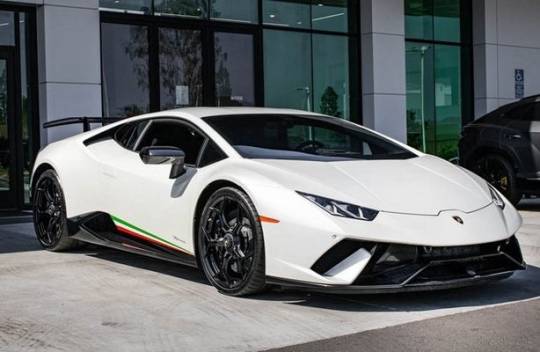
It is a naturally aspirated 5.2L V10 Engine AWD. This car has a fierce fiery engine on its car but still has that cool matured Body. And the ALA (Aerodinamica Lamborghini Attiva) Is brilliant. It is an active Aerodynamic system that allows the car to go faster.
Tenya Iida:
Sport Car/ Daily Drive:
Is the Brabus 800 GT 63s
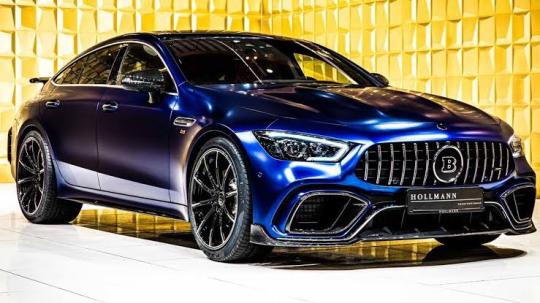
This car is perfect fot Iida, It has a look in which my friend quote “Sophisticated Look”. And Mind you this car is probably The Fastest Car! For the sport/daily drive Car compare than anyone else in the list. This car packs a crazy 800 BHP and that’s says it all
Supercar:
Bugatti Veyron SS
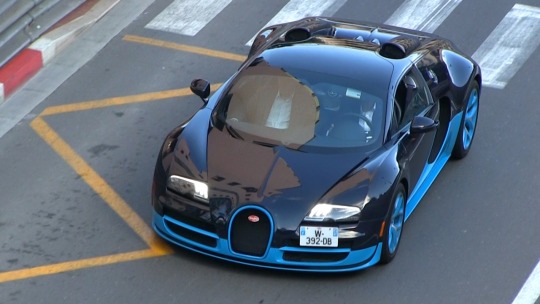
The fastest Car In the world! In 2010. The specific look that I would like to go is Drift From Transformer: Age Of Extinction. That Blue Lining is perfect for Iida. For some people engines might be boring, But this car have the power of 1200 Horses in it
Kirishima Eijiro
Sport Car/ Daily Drive:
The car that this Manly man need to go with is the 2020 Mustang Shelby GT500.
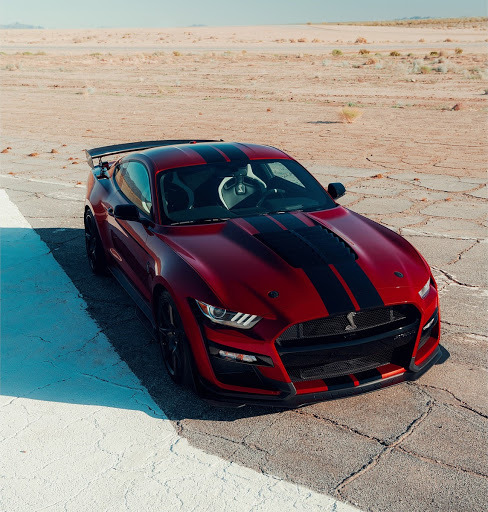
The Engine has a named called the “Predator” V8 Engine. 750 BHP is nothing short and the roar from within is on par with Bakugo’s SRT Hellcat.
Supercar:
I was having second thought of choosing this car. But whenever I think of Kirishima in a car, This car always pops into my head
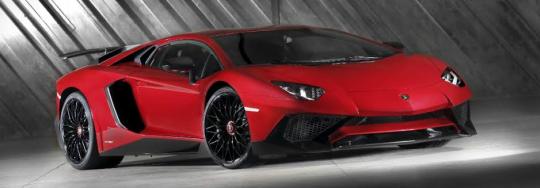
Lamborghini Adventador SV. This car Looked manly and menacing. Why I thought about this car, is that it associated it self with a bull in which Kirishima and this car can relate to. A loud V12 Engine roars loud and deep in a intimidating voice and its perfect.
Okay that’s all I can give for this part. Because of limitation I cant post it all. But there will be more to come not just for the students but many more.
#BNHA#MHA#Boku No Hero#My Hero Academia#Midoriya Izuku#Bakugo Katsuki#Todoroki Shoto#Tenya Ida#Kirishima Eijiro#street racer au#Street Racer#Racers au#Racing#au#Cars#European#JDM#American Muscles#BNHA AU
30 notes
·
View notes
Photo

New Post has been published on https://www.vividracing.com/blog/top-5-best-leveling-kits-for-the-ford-f-150/
Top 5 Best Leveling Kits for the Ford F-150
The Ford F-150 is the most popular pickup truck in America with a best-selling record and solid reputation for delivering impressive power, performance, capability, and good looks. The F-150 is purpose-built to be relentlessly tough with a military-grade, aluminum-alloy body and torture-tested high-strength steel frame to not only get the job done, but get it done smarter. Ford merged premium-grade muscle with finely tuned intelligence and design to deliver the best of all worlds in a complete package that checks all the boxes truck owners could want. Even so, many owners flock to the aftermarket to customize their vehicle to set it apart from the rest and enhance its natural DNA. With that said, one of the first and most popular mods truck owners do is install a lift kit on their ride.
Lift kits are a great way to increase ground clearance and improve off-road performance while giving your truck that added aggressive appeal. Whether you’re looking to upgrade your tires for more traction and increase wheel travel or you just want that beefier look without altering the towing capacity, lift kits are a great mod to look into. There are so many options on the aftermarket for the Ford F-150 and all of its variants, so it may be a bit daunting when conducting research on what may be best for your needs. To help you along, we have compiled the following list of the top 5 best lift kits for the Ford F-150 to get you started. You can also browse all of our lift kits for the popular Ford F-150 right here.
1. ReadyLift 7-Inch Suspension Lift Kit w/ Shocks
The ReadyLift 7-Inch Complete Lift Kit System will give your Ford F-150 the maximum lift you have been looking for. ReadyLift is widely recognized for offering the best comprehensive lift kits designed specifically for your vehicle, featuring high-quality components and the best construction possible to provide you with the absolute best suspension solution. With ReadyLift, your F-150 will enjoy a lifted height that maintains the factory ride quality and steering geometry so you never have to compromise. This system is a top choice for those who wish to run the stock wheels or most 17-inch (or larger) aftermarket wheels and up to 37-inch tall tires without increasing the front track width. That being said, the 7-Inch Complete Lift Kit System from ReadyLift will give your truck that aggressive appearance that performs just the same both on and off-road without letting you down.
The premium complete 7.0″ front / 5.0″ rear 2015-2020 Ford F-150 4WD kit is specifically engineered to provide maximum lift and rugged off-road strength while maintaining the factory ride on the street. The 7-inch lift kit features precision-designed laser-cut and CNC-formed subframe assemblies that directly bolt on to your truck, rear lift blocks, and rear SST3000 shocks. Welding is required for one section which attaches to the frame. The kit includes heavy-duty cast nodular iron steering knuckles, a patent-pending rack-and-pinion steering drop correction system, and an integrated differential drop bracket system to guarantee correct CV axle angles and maximum performance in 4WD mode.
This kit features patent-pending, fabricated industry-first offset steel strut extensions that provide the maximum 7 inches of front lift while 5-inch tall OEM-style rear blocks add four inches of lift to the back end that provides a quality rear lift that doesn’t sacrifice the ride. This system even includes patent-pending steering extensions to keep your factory-like steering performance so you can enjoy a well-rounded driving experience that does not sacrifice one factor for another. The patent-pending RCS (Rack Correction System) steering extension design works with the relocated steering rack to retain the stock steering geometry so you do not have to cut or replace the tie rod ends like other kits on the market. Best of all, this kit features a no-weld design and is a complete bolt-on installation.
Learn More and Buy It Here!
Shop All ReadyLift Kits for F-150 Here.
2. ICON 2.63-Inch Stage 3 Lift Suspension System
ICON Vehicle Dynamics is a recognized leader in revolutionary performance suspension systems. Its Stage 3 0-2.63″ Suspension System for the Ford F-150 is designed with maximum performance and the serious driver in mind. ICON engineers’ primary focus is to increase wheel travel and damping ability, which translates into remarkable vehicle control and ride quality both on and off the road. The Stage 3 system includes vehicle-specific tuned 2.5-inch coilover shocks with an internal reservoir for exceptional cooling properties and ICON-engineered Eibach coil springs for that superior vehicle “feel” throughout the range of travel.
These coilovers are also height adjustable from 0-2.63 inches, thus allowing for the use of larger, more aggressive wheel and tire combinations. Tubular upper control arms on the F-150 not only add strength and durability, but also help to retain factory alignment spec range increasing caster over stock. The ICON 2.5 Aluminum Series piggyback reservoir rear shocks utilize a vehicle-specific valving that balances the performance of the truck from the front all the way to the rear. ICON’s Stage 3 suspension system is an excellent choice for F-150 owners who are looking to enhance the capabilities of their pickup truck on the road as well as on uncharted terrain.
This package features upper control arms with ICON’s patented Delta Joint. The Delta Joint is a heavy-duty high angle ball joint that combines the durability of a ball joint with the performance characteristics of a traditional uniball. The Delta Joint features a zinc-plated housing that provides the first layer of defense against corrosion, while a tough grease seal keeps potentially harmful elements out of the inner workings. The greasable metal-on-metal design increases the longevity of the Delta Joint while also delivering a noise-free operation. And, with 6061 aircraft-grade aluminum CNC-machined components, this package is strong enough to stand up to anything that comes its way. The entire system is a bolt-on mod with no cutting or welding necessary for install.
Learn More and Buy It Here!
Shop All ICON Lift Kits for F-150 Here.
3. Fabtech 6-Inch Basic System w/ Stealth Shocks
In cooperation with the Ford Motor Company, Fabtech has developed this 6-Inch Suspension System for the Ford F-150. This new kit includes heavy-duty ¼-inch thick steel lower control arm crossmembers with an integrated front differential skid plate for protection and increased front suspension strength. This is an important construction feature in order to properly handle large tires both on- and off-road. Fabtech’s extended-length ductile iron steering knuckles allow the use of 18”, 20” or 22” wheels and up to 35-inch tall tires so you can tackle your next adventure with confidence.
The Basic System includes front spacers utilizing the Ford F-150’s factory coilover shocks to retain the stock ride at the front while the rear receives Fabtech’s Stealth monotube shocks. Stealth is the first all-black monotube shock absorber with an identifiable raised metal nameplate that represents the pinnacle of quality you can rely on for a superior ride at a price that won’t break the bank. Stealth shocks are built with a 46mm diameter high-flow piston and vehicle-specific valving for a great ride with oversized tires. All Stealth shock absorbers feature Nitrocarburized piston rods that are superior to chromed rods in durability and corrosion resistance. These Nitrocarb piston rods are finished in matte black for a complete black-out shock package.
This 6-inch lift kit will not only give your truck a more muscular appearance that asserts dominance, but it will also deliver great ride quality. All components of this package are made from top-quality materials to guarantee durability, performance, and longevity. Installation is straightforward with no drilling, welding, or driveshaft modifications required. What’s more, this suspension system comes with Fabtech’s 5/60 Powertrain warranty.
Learn More and Buy It Here!
Shop All Fabtech Lift Kits for F-150 Here.
4. RBP 4-Inch Suspension Lift Kit w/ Shocks
Rolling Big Power lift kits are designed to provide the best of both worlds so you never have to compromise good looks, ride quality, or performance. They offer the smooth ride and drivability of a standard truck with the increased ground clearance and accommodation of bigger wheels/tires of a custom off-road truck. Such is achieved by providing precision-engineered parts that replace the factory components to bridge the gap between the wheels and raised body, all while maintaining factory settings and suspension geometry. The RPB 4-Inch Suspension Lift Kit w/ Shocks will let you pull double duty, have your daily driver handle better than it did stock, and go on to tackle the off-road like a pro.
This 4-inch lift kit for the Ford F-150 is FMVSS 126 compliant, and includes the same features and benefits of the current 6-inch system for those looking for the same quality and performance at a lower height. The system is built around two heavy-duty 1-piece lower control arm crossmembers and massive ductile cast iron steering knuckles. Differential relocation brackets place the front differential for perfect CV angles and allow for the factory front driveshaft to perform as it should. The lift is provided by bolt-on strut spacers that do not require disassembly of the factory struts to install. New eccentric cam bolts make adjusting the alignment a breeze; sway bar drops adjust the sway bar to its optimum position and a heavy ¼-inch thick differential skid plate protects the underside when off driving off-road.
At the rear, full 4-inch cast-iron lift blocks with integrated bump stop wings provide enough lift to level the truck nicely for that complete off-road look. Rear performance shocks complete this installation and offer enough clearance for a maximum-sized tire of 35×12.50 (37×12.50s can be used but will require some trimming). Best of all, all RBP Lift Kits are backed by a Limited Lifetime Warranty – so you’re covered, no matter what. With this RBP Lift Kit package, you can tackle the streets of the city, or the trails in comfort, style, and performance with the confidence to “Go Further.”
Learn More and Buy It Here!
Shop All RBP Lift Kits for F-150 Here.
5. Daystar 4-Inch 4.0 Series Tactical Lift Kit
Daystar’s impressive line of precision-engineered suspension parts delivers unparalleled ride quality, comfort, good looks, and handling. The 4-Inch 4.0 Series Tactical Lift Kit for the Ford F-150 is actually a lift and level system combined in one, designed by enthusiast engineers. This package was tailor-made for consumers who want just enough lift to clear 33-inch to 35-inch tires, depending on the vehicle. The 4.0 Series Tactical Lift Kit provides additional clearance so you can fit a larger wheel-and-tire combination to give your truck a more menacing appearance without harming the ride quality. After all, your F-150 deserves the best and this lift/level kit will allow you to achieve that nice lift without the high price tag so you can still have room in your budget for larger tires.
A popular form of lifting is to combine body lift kits and leveling kits so you can experience optimal benefits with minimal costs and negative effects on your truck. This keeps the center of gravity lower than just a lift kit and will give you the advantages of a suspension lift without the high price point. This complete 4-inch Kevlar-infused polyurethane kit will lift your truck without altering the OEM suspension geometry like some other products on the market. The Kevlar in the coil spacers is similar to rebar in concrete, it reinforces an already tough material to make it even stronger and more durable to stand up to the elements of off-roading.
This package includes a 2-inch body lift kit paired with a 2-inch leveling kit. There are absolutely no cutting, welding, or chassis alterations needed for install. What’s more, there is no metal-on-metal contact, thus providing a noise-free operation. So, whether you want to run larger tires on the stock or aftermarket wheels, this system lets you do just that so you can have the truck look you want without negatively impacting other factors. With Daystar, your F-150 will be able to maintain its stability controls, ride quality, and towing capacity all while being FMVSS126 compliant and carrying the brand’s Lifetime Go Everywhere Warranty!
Learn More and Buy It Here!
Shop All Daystar Lift Kits for F-150 Here.
4 notes
·
View notes
Text
A Typical Week: Spring 2021
Before getting into the actual content, I thought I would just point out that this is my 100th blog post! You can check out the full list here.
As noted in my fall 2020 version of this post, my week is primarily dictated by my current course schedule. (To check out all of my past courses, click here). Furthermore, the way I write these posts is to focus on academics as they're a big part of my life, but also the most natural thing to write about publicly. This post should give you a realistic sense of the structure of my week and courses. I thought it may be useful to contrast expectations and reality when it comes to productivity. Early in the semester, I mapped out my idealized homework schedule around my meetings and assignment deadlines. The first row lists deadlines. The other rows are split by my meals (lunch and dinner). Even if I don’t strictly follow the schedule, spending the time to map things out is quite useful. To write about my real schedule, I actually looked back through data from my time tracking application, Toggl Track. I know this is a very long post, but it wasn’t really interesting enough to become a two-parter.
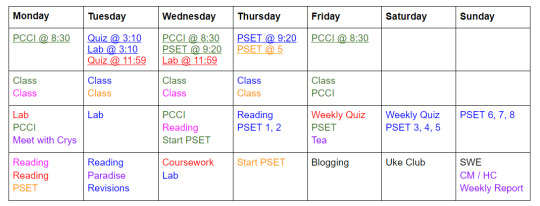
A typical school day starts off with my 9:00 (or 9:10) alarm. I also often have a second alarm set for 9:15 as a backup. Here at college, I simply use the default clock app on my phone and have it play from my favorites playlist on Spotify. I very occasionally need to wake up earlier to finish up an assignment as midnight is my strict cutoff for doing work. I know a consistent sleep schedule is very important, but it’s definitely something I struggle with.
Monday:
My week begins with a 9:20 math class. The specific course is math methods which as previously explained is an applied math course from the physics department that is required for physics and engineering majors. We usually start off by going over the pre-class check in (PCCI) and/or other questions students have. This review is followed by a lecture on new material. Throughout the class, we work through example problems in breakout rooms (on Zoom whiteboards) and answer multiple-choice questions using the poll feature. (The poll questions are anonymous and ungraded). Partway through the class, we get a 4-minute break. One nice thing about this class is that we actually thoroughly go through the example problems when we regroup as an entire class. This is important because, without feedback, practice is of limited utility. Furthermore, going over the problem gives me a chance to get everything into my notes. The integration of lectures with practice is something I really appreciate about this course. In past math classes, the format has been a lecture followed by a worksheet of practice problems. While that model sometimes makes sense, I much prefer this integrated approach. One issue with leaving practice until the end is that you sometimes run out of time and don’t catch knowledge gaps until the end of class. After math methods, I get a 20-minute break during which I often listen to the latest episode of The Daily (a short new podcast from the New York Times).
Next up is my philosophy of logic class which starts with a few minutes of breathing and stretching. On the first day of class, I thought this was a really strange thing, but have come to appreciate it. Afterward, we go over any relevant announcements and sometimes debrief the previous class. This class is different from my other classes in that it is reading and discussion-based. We spend most of the class in the main room strengthening our understanding of the reading through full class discussions and mini-lectures. Even though the class is already very small (13 students), we also make use of breakout rooms to work through study questions. Our tests are pyramid style which means we spend one class period working independently and another class on the same questions in a small group. We also have short quizzes, called mini check-ins, every few weeks. Next up is lunch during which I sometimes listen to a podcast or audiobook. You can check out some of my favorite podcasts and books of 2020 at the associated links.
After lunch, I have my computer systems lab. The teaching assistant of my lab section starts off with a quick introduction to the assignment. We then work independently and ask questions as they come up. Even though we don’t really work collaboratively the lab is sort of fun because it’s less formal than a regular class. For the first part of the semester, the lab assignments often took way longer than the allotted time (and sometimes longer than our projects) so I often spent more of the afternoon finishing up the assignment. Fortunately, the course staff was made aware of this issue and adjusted accordingly. Just for some context, this course is a UMass class which is why there is a whole course team and teaching assistants. To read more about Five College course registration click here. At Smith, while some classes have teaching assistants who help out during class, all of the classes are taught and run by our actual professors. We also have student tutors as an academic resource outside of class. To read more about academic support systems at Smith, click here.
After finishing up my lab assignment, I start in on my math methods PCCI. A typical PCCI consists of reading a section or two of the textbook (written by our professor) and completing a short practice problem or so-called discovery exercise. Depending on the week, I either start in on my reading assignment for my computer systems class or logic class. At 4:00, I have my weekly one-on-one meeting with my supervisor for my ResLife job. Following the meeting, I relax by listening to music or an audiobook. At 5:00, I order, pick up, and eat my dinner. After dinner, I complete any remaining readings for my computer systems and logic classes. If I haven’t yet completed my lab assignment or have an exam the following day, I devote some of the night to circuits. Otherwise, I may work on a computer systems project or theory of computation assignment.
Tuesday:
Tuesday’s are my busiest day of the week in terms of class hours. With that said, it’s nothing compared to my Thursdays last fall. I start Tuesdays off with my circuits class. During class, we learn new circuit theory and circuit analysis techniques. We also go through example problems. While we often run out of time to fully work through the extra practice problems in breakout rooms, fortunately, my professor posts videos going over those problems. After taking our feedback into account, we now get a break partway through the class. Each lecture covers a lot of material, so the brain/screen break is much appreciated. To check in on how the class is feeling about various concepts, our professor has us use the annotation feature on a scale from totally get it to totally lost.
After circuits is my 20-minute break followed by my theory of computation lecture. The theoretical nature of the material means that it really is a lecture. While we obviously go through examples, there aren’t really practice problems as there would be in a math class. We use the chat to some extent in all of my classes, but to a greater degree in this course. Next up is lunch and a COVID test. At 1:40 I am back to circuits for the lab. Most of the labs are virtual with physical lab equipment, but a few have been in-person so that we could use special equipment. Ironically, one of our in-person labs was actually fully virtual in terms of lab equipment. (We were sitting on the lawn outside of Ford together and running circuit simulators on our laptops). Fortunately, we don’t usually need to stay until 4:30. I tend to just collect my data, ask some questions about the material, and then finish up the write-up at a later point in time. This time block is also the one used whenever we have an exam.
I always start by doing the textbook reading for circuits. I don’t read super closely, but it’s still a good primer for the next class. In terms of other work, Tuesdays are a bit more unpredictable and really depend on how much I got done over the weekend. Specifically, while I usually finish my math methods assignment over the weekend, occasionally I need to finish it up on Tuesday evenings. Likewise, for circuits, I sometimes finish the last few problems on a Tuesday evening. At 7:00, I have a staff meeting with the other community advisors in my neighborhood and our supervisor. Our meetings usually take place over Zoom, but our most recent one was in-person with ice cream from Herrell’s which was a lot of fun. You can read about some other Northampton food locations (restaurants, cafes, and more) here. In weeks where I haven’t yet started my computer systems work, I do what I would usually have done on a Monday on a Tuesday.
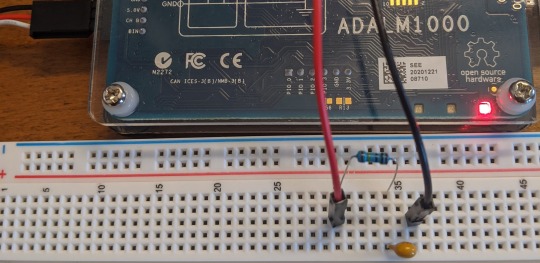
Wednesday:
Wednesdays are similar to Mondays without the computer systems lab and ResLife meeting. In the afternoon I often attend office hours for my theory of computation class to ask questions about the weekly assignment. Even though I don’t have my logic class until the following Monday, I usually just do the reading on Wednesday afternoon. On Wednesday evenings, I typically work through my circuits revisions. I also tend to do a good chunk of my computer systems coursework. This consists of watching lecture videos, taking notes, and taking lesson quizzes. Furthermore, I have definitely spent some Wednesday evenings working through computer systems projects.
Thursday:
Thursdays are like Tuesdays without the circuits lab. Even though I have the whole afternoon free, unfortunately, I am sometimes having to finish up my theory of computation assignment. It’s also common for me to start working on the new math methods problem set. In the case of this Thursday, I played some guitar and then started writing this post. I also do my circuits reading for Tuesday and take the quick lab quiz. If I have any remaining computer systems coursework, I do that as well.
Friday:
This semester I only have one class on Fridays, math methods. After class, I get a COVID test and an early lunch. I know it seems crazy how many free afternoons I have given that I am taking 22 credits and am a double STEM major. However, part of this is explained by my UMass computer systems course being asynchronous and the fact that I completed the one-credit companion course in C programming before my Smith semester started. My computer systems class was originally scheduled to meet Monday, Wednesday, and Friday afternoons. Even though I wish the class was synchronous, the flexibility of an asynchronous class has been much appreciated. Furthermore, the class was in a terrible time block that would have caused me to miss most of house tea. Back to what a Friday afternoon looks like! After completing my PCCI for math methods, I often rewatch the lecture videos for computer systems (on double speed) and then take the weekly quiz. I next pick up tea snacks from Cutter-Z and attend house tea at 4:30. After tea, I order dinner and often eat it in the living room with housemates. Fridays are definitely my least productive day and I have definitely taken a few weekly quizzes on Saturday after having planned to take them on Friday. Instead of doing real work, I often spend Friday afternoons writing blog posts. As for this post, I wrote most of it yesterday but spent a good chunk of Friday afternoon on it as well.
Saturday:
Despite my best efforts to have a consistent sleep schedule, I often sleep in on Saturdays until 10:00. I then have a leisurely hour or so of listening to an audiobook. At 11:00, I get an early lunch. As mentioned in the Friday description, I sometimes end up taking my weekly quiz for computer systems on Saturday. When I have tests in math methods, I typically take them on Saturday night. (The tests are timed but are self-scheduled over the given weekend which includes Friday). When there is not a math test, I often work on my math problem set in the afternoon. Every few weeks, I host POCheese at 4:00. This week we are actually going to be meeting at 5:00 for a ramen night! At 6:00 I have a uke club meeting over Zoom. In weeks where I have already finished my math problem set and don’t have a test, I start in on my circuits problem set.
Sunday:
Sundays start like Saturdays in that I often have a leisurely morning. At 11:00 I get a COVID test and an early lunch. Sundays are almost always devoted to my circuits. This includes working through the problems set, the lab writeup, or studying for an upcoming exam. If my Saturday wasn’t as productive as intended, I do the homework described in that section. At 6:00 I have a Society of Women Engineers (SWE) board meeting. At 7:00, I either lead a community meeting (part of my ResLife job) or attend house council. Afterward, I fill out my weekly report (also part of my ResLife job).
9 notes
·
View notes
Text
Thoughts : WandaVision [Disney+, Episodes 1-3] (2021)

2020 may have delayed the MCU’s rollover into Phase 4 with COVID-19 and theater closings putting a huge stumbling block in front of the perpetually delayed Black Widow film, but with box office not a factor in regards to WandaVision, the powers that be have moved forward with premiering the series on the Disney+ streaming service. With talk of the film being a setup for the incoming Doctor Strange in the Multiverse of Madness (not to mention an alternate take on the infamous House of M comic story), the levels of intrigue were definitely high, and with the 3 of the scheduled 9 episodes currently streaming, there may be more questions than answers in the minds of viewers.
THE STORY THUS FAR
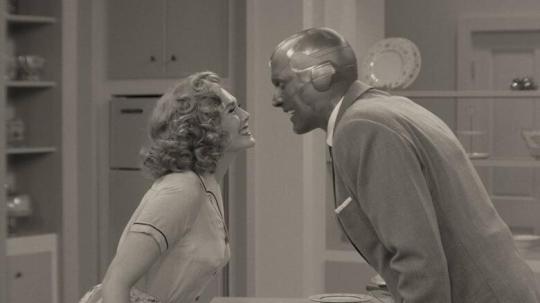
Episode 01 : Filmed Before a Live Studio Audience Wanda (Elizabeth Olsen) and Vision (Paul Bettany) settle into the town of Westview to begin the next chapter of their once troubled life. One morning, Vision notices a heart placed on the calendar for that day, but Wanda and Vision are unsure of what the heart represents. After Vision leaves for work, Wanda’s neighbor Agnes (Kathryn Hahn) introduces herself, and immediately interjects herself into Wanda’s plans for the “special night”. Vision, however, is reminded by his boss Mr. Hart (Fred Melamed) that he and his wife (Debra Jo Rupp) will be coming to Vision’s house for dinner, setting up two sets of alternate plans for a collision course to wackiness.

Episode 02 : Don’t Touch That Dial Wanda and Vision take part in the Westview talent show (”for the children”) as Glamour and Illusion for a magic act. Agnes introduces Wanda to Dottie (Emma Caulfield Ford), the head lady of Westview, whose firm leadership style causes tension in the run-up to the event. Vision attempts to integrate himself with the Neighborhood Watch, but a chewing gum-based mishap throws him for a major loop that puts both the magic act and the identities of Wanda and Vision at risk.
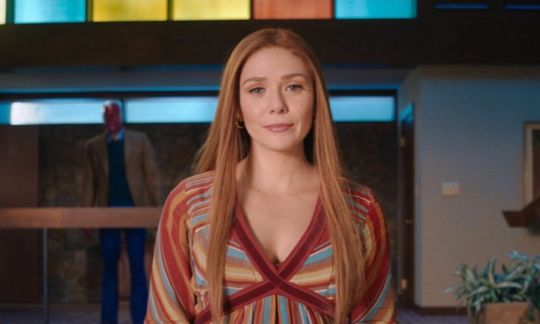
Episode 03 : Now in Color A surprise pregnancy forces Wanda and Vision to plan for welcoming a child into their home, but strange events begin to occur surrounding the pregnancy. Rather than the standard 9 month period, Wanda’s pregnancy accelerates at an exponentially rapid rate that not only causes Vision stress, but impacts Wanda’s ability to control her magic. When the pregnancy abruptly begins, Vision runs to fetch Dr. Nielsen (Randy Oglesby), but before they can return, Wanda’s neighbor and new friend Geraldine (Teyonah Parris) lends a hand. In the aftermath, however, Geraldine shows her hand, causing even more confusion in Wanda’s world.
ADDITIONAL RESOURCES

Emergency Awesome YouTube Channel

New Rockstars YouTube Channel

ScreenCrush YouTube Channel
These three YouTube channels are known for their timely and in-depth analysis of many properties, and they have continued this tradition by uploading episode recaps and element breakdowns for WandaVision.
THOUGHTS ON THE SHOW Stylistically, WandaVision is a bold choice for the MCU, opting to re-skin our main characters in different versions of nostalgic television eras and shows rather than building a unique look or leaning on established locations within the previously established MCU world. As a former Nick at Nite junkie, as well as a product of the 1980s, I was very familiar with the numerous shows explicitly referenced, and the use of practical effects and single camera setup was emulated perfectly. The adjustment of watching two of the MCU’s most powerful characters attempt to minimalize themselves within the formulaic framework of sitcom television from the 1950s, 1960s, and 1970s is a bit of a rough one at first, as the story seemingly is traveling in the reverse direction of our expectations, but not so far beneath the primary layer shown, there seems to be a world of intrigue bubbling in the anticipation of being discovered.
Currently, there are tons of elements that seem like Easter Eggs, but I am almost certain that they will factor in as key parts of the story in due time. The primary bit of visual stimulus that has most people buzzing is the S.W.O.R.D. imagery, an organization similar to S.H.I.E.L.D., but with a focus on intergalactic and mystic threats rather than superheroes and governmental communication. Much of the jewelry and flare worn by the women of the show seem to contain relevant symbolism of some sort : Agnes wears a pin that seems to have 3 characters on it (perhaps a reference to Mephisto, Wiccan and Speed?), Geraldine (aka Monica Rambeau) is introduced with a pin that looks A LOT like the dimensional gateways created by Doctor Strange’s sling ring, and Geraldine later wears a necklace with the aforementioned S.W.O.R.D. symbol (which is also seen on the toy helicopter and the uniform of the mysterious beekeeper).
It is also currently unclear who the antagonist (or possible multiple antagonists) of the story are... Agnes and Dottie have both been pegged as early candidates, with tons of speculation swirling around the possibility of Agnes being Agatha Harkness and perhaps working in league with Mephisto, Grim Reaper or Nightmare. There is also a groundswell of viewers who wonder if Wanda is the villain of the story, which leans into the House of M theory in the sense that it has not been established if Wanda is currently cognizant of her reality or not. This theory is also fueled by the strange behavior(s) of those who inhabit Westview : most everyone falls into a sitcom trope performance when around Wanda, but at times, people seemed to get locked into weird, uncanny valley level “glitches”, or are outright accusatory of Wanda and Vision’s intentions.
The characters (and acting) in the show is solid so far, despite the lack of context or clarity in regards to the bigger picture.

Wanda is playing an Americanized, sitcom-esque version of herself. She still seemingly has some version of her powers, as she can manipulate objects with her mind and control time. It is unclear how much she is in control of what we’re seeing, versus someone else being in control or there being a complete lack of control.

Vision’s tragic sacrifice, rebirth and immediate death is well documented from the events of Avengers : Infinity War, and yet, he seems to be alive, devoted to Wanda, and completely unaware of his tragic deaths. Up to this point, he feels like a bit of a pawn in a bigger game, rather than the all-powerful and all-knowing sentient synthetic weapon that he is.

Agnes is by far the biggest mystery of the show up to this point. The lion’s share of character theories revolve around her, her references to the Devil, darkness and her absentee husband Ralph. She is the most present character outside of Wanda and Vision, she seems to be “in on the joke”, and her demeanor is a bit more forward than the rest of Westview’s inhabitants. Up until episode 03, Agnes felt like she may even be in control, but the fear she shows in episode 03 only serves to blur the lines further.
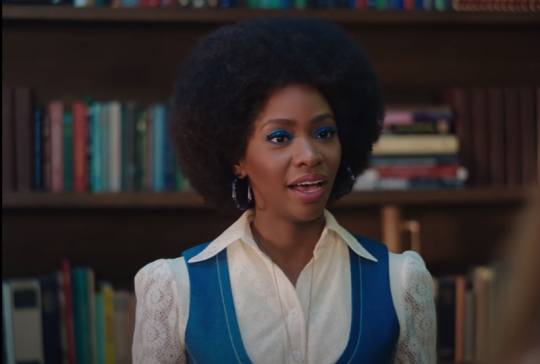
If Agnes seems to be the most aware of her surroundings, then Geraldine stands in stark (no pun intended) contrast, as she more often than not expresses confusion in regards to her presence in Westview. She has adorned the symbolism of S.W.O.R.D. on her outfit, and at one point, she has a pin that resembles a dimensional gateway (as mentioned previously). She has also made the most jarring statement of the series so far, seemingly snapping out of the “spell” everyone seems to be under and reminding Wanda directly about the tragic loss she suffered at the hands of Ultron.
With six episodes left to go, and a seemingly direct march through the relevant eras of television before we get to the root of the matter, it is highly likely that episodes four, five and six will feature further sitcom stylings of the 1980s and 1990s, and possibly even the 2000s, before switching into a standard MCU-style narrative. Regardless, I am now hooked, and will plan to provide a blog after the release of episodes six and nine, focusing on three episodes at a time.
THE QUESTIONS As per usual with shows of this nature, there are a ton of things going on that raise a multitude of questions...
- What’s with all of the hexagon imagery? Are we in some sort of hive, or is the town of Westview trapped in hive-mind situation?
- Who specifically is controlling Wanda’s reality? It seems that Wanda can control the flow of time to an extent, but it has been established numerous times she is being watched from the “outside”... is it possible she is also being watched from within the world of Westview that Wanda inhabits? Maybe by the mailman, or by Agnes?
- How “real” is the Vision that we are seeing? Is he some sort of recreated Vision made from whatever was salvageable after his encounter with Thanos? Is he a manifestation of Wanda in some way, shape or form? Is Wanda connected to a computer, and is Vision just a computer program at this point, like JARVIS?
- Who is the beekeeper from the second episode?
- What’s the story with the commercials, and how do they fit into what has been presented to us? Stark Industries, Baron Wolfgang von Strucker and HYDRA have all been referenced in the commercials directly, and all deal with elements of time and escape. Also, who are the two people that star in the commercial? It’s been the same two, and the woman has appeared in all three commercials?
#ChiefDoomsday#DOOMonFILM#Disney+#WandaVision#ElizabethOlsen#PaulBettany#DebraJoRupp#FredMelamed#KathrynHahn#TeyonahParris#KatDennings#RandallPark#JolenePurdy#AsifAli#DavidLengel#AmosGlick#EmmaCauflfieldFord#DavidPayton#RandyOglesby#RoseBianco#IthamarEnriquez#VictoriaBlade#FilmedBeforeALiveStudioAudience#DontTouchThatDial#NowInColor
17 notes
·
View notes
Photo
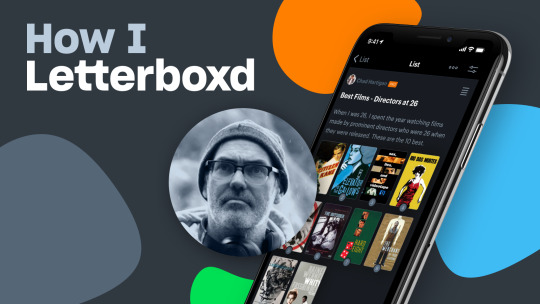
How I Letterboxd #10: Chad Hartigan.
Filmmaker Chad Hartigan talks to Jack Moulton about his prescient new sci-fi romance, Little Fish, why radio silence is worse than a bad review, and his secret system of Letterboxd lists.
Chad Hartigan has won prizes at the Sundance Film Festival and the Film Independent Spirit Awards for his acclaimed films This is Martin Donner and Morris From America. He’s also been a Letterboxd member since way back, joining what he proclaims as “my favorite website” in 2013. Hartigan has always been an obsessive logger: he has transcribed all of his viewing data since 1998 and continues to work on filling in the gaps in his downtime.
Like many ardent Letterboxd members, Hartigan is a diligent list-maker, keeping tabs on his best first viewings of each year and assembling an all-time top 1,000 films over the summer (with an accompanying 26-minute supercut). Perhaps unusually for a member of the film industry on Letterboxd, he’s unafraid to hold back his opinions and regularly voices his critiques on even the most acclaimed films.
Hartigan’s newest film, Little Fish, is a sci-fi love story starring Olivia Cooke (Sound of Metal) and Jack O’Connell (Unbroken). Written by Mattson Tomlin, it’s set during an imagined pandemic—shot long before our own actual pandemic—wherein a disease causes people to lose their memories. It was set to premiere at the 2020 Tribeca Film Festival, and then postponed due to Covid-19. It’s now out in limited theaters and on demand, and we were delighted with the excuse to put Hartigan in the How I Letterboxd spotlight.

Olivia Cooke as Emma and Jack O’Connell as Jude in ‘Little Fish’.
You made a pandemic movie before the pandemic. How do you feel about accidentally hitting that unfortunate zeitgeist and now consequently being asked questions like this one? Yeah, strange. The questions are fine. If it wasn’t this one, it would be another that you would have to answer over and over again. One of the things that drew me to the project was that it felt like a fantasy that wasn’t necessarily rooted in reality in a way that my other [films] were. I liked that it’s old-fashioned in its attempts to purely take you somewhere and wasn’t intended to hold up a mirror to our times—but then in the end that’s exactly what it’s doing. I’m curious myself, and I’m checking Letterboxd to see the reactions from people because I really couldn’t guess what it would have been like [now].
Are there any prescient details you’re proud of getting right? I’m so grateful and happy that Jack [O’Connell] is wearing his mask correctly. That’s the number one thing that I’m glad we got right. I think it was very smart of Mattson to focus the movie on [the relationship] rather than the details of this global pandemic. I feel the reason it’s not in bad taste is because it dealt with those things as a backdrop and instead focused on people just trying to remember what’s important and clinging onto those that they love.
Onto our own favorite memory aid, Letterboxd. How did you discover us and how did you manage without us? I’ve been on since 2013, so I’m probably one of the earliest people to jump on it. I love the interface and the diary, just aesthetically it was really fun. I’ve been keeping track of what I see with analog [methods] for as long as I can remember. I have diaries and planners so I logged all that old information. If I was running for president, my platform would be that everybody is required to use Letterboxd comprehensively, because I just love to know what everybody is watching all the time.
Do you talk about Letterboxd in the real world with the other filmmaking people? Yes, and I’m often trying to convince them to join. Other filmmakers are more concerned about having their opinions on peers be public knowledge than I am, I guess. I’ve made four films now and each one’s been bigger and more widely seen than the last. The very first one was a total no-budget affair that couldn’t get into any festivals and I was very excited when I finally got it into the Hamptons Film Festival. It was about half-full and one or two people came up to me afterwards and said they liked it. This was pre-Twitter so I spent the whole next day Googling to see if anybody had written anything. I was so curious to see what people thought and there was nothing—not a review, not a blog—just total emptiness.
When the next film got into Sundance, there were people tweeting their reactions and actual reviews and I read everything. People were asking if the bad reviews hurt me. Absolutely not—nothing can be worse than the radio silence of nobody caring about the first film. The fact that people care enough to sit and write about this movie—good or bad—is a win, and I’ve carried that onward. I like to see what people think, it can be helpful in how you view the film as a success or failure. You learn and move on.
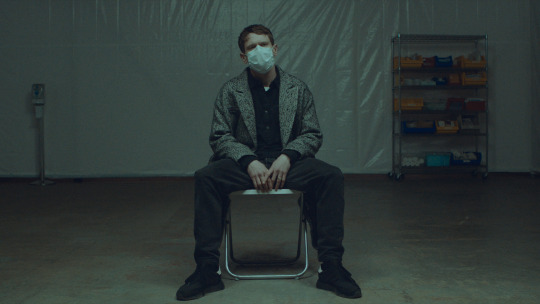
Jack O’Connell at least remembers how to wear a mask in ‘Little Fish’.
Some filmmakers have told us they’re kinder to films after making their own, but you’re not shy at all about being critical. How did making your own films change your perspective as a critic? I don’t consider myself a critic so that’s why I’d be less concerned with someone reading what I thought. Why should they put any stock into what I think? If they get hung up on it then that’s their own stuff because I’m not a critic. Like everyone else on Letterboxd, I just love watching movies. Obviously I can appreciate and understand some of the technical aspects maybe moreso than people who don’t make films, but at the end of the day, rarely that’s the thing that makes you love a movie or not. There’s a great bit in Francis Ford Coppola’s commentary track for Finian’s Rainbow where Fred Astaire’s doing a dance number and [Coppola admits] he totally messed it up because Astaire’s feet aren’t fully in frame. He’s very honest about his mistakes because it’s one of his earliest movies. Then he goes on to say that he thinks there’s the same number of mistakes in Finian’s Rainbow as there are in The Godfather, it’s just that he made mistakes on the things that don’t matter for The Godfather. No film is perfect, but if it can latch onto this one magical aspect that connects you to it, that’s what makes you love it or not.
You had a project where you chart the best films made by directors at certain ages as you reached that age. Tell us more about it. That was a great project. I got the idea when I was 26. This was back when I had a Netflix DVD subscription and it was just hard for me to randomly choose DVDs to throw in the queue. I needed a system. I decided to watch movies from directors when they were my age and see if there’s some common denominator, something I can learn. At that point, there weren’t many, there were films like Boogie Nights and Fassbinder films. Not many people had made stuff when they were 26 or 27, so it was very feasible. Every year there were more movies and more directors to add to the list and it became time-consuming. I did it all the way up until I was 34 and the reason I stopped was because I had a son and there was no way I could continue this level of viewing output.
My favorite part of your account is the fact that you log every viewing of your own films. You know for a fact that you’ve watched Morris From America 26 times and Little Fish fifteen times. Why do you log them? What counts as a viewing? I’ve clearly watched those movies many more times in little chunks but I’ll only log it if we’re sitting down and watching it from beginning to end. I have a ticket to see Little Fish in the drive-in on Saturday, so it’s going to be logged again. Why do I do it? Like I said, I wish everyone was required to use Letterboxd comprehensively. That’s what it’s there for for me, an accurate log of what I watch. This is psychotic behavior but I’m tempted to have a Letterboxd account for my son. I’ll do his views for him once he starts watching movies until he’s old enough to take over. It’ll just be, like, Frozen a thousand times but he’s not old enough to watch anything yet, so we’ll see.
Have you discovered any films thanks to Letterboxd discourse that influenced your approach to filmmaking? For sure, I can’t maybe say specifically, but once I dropped the directors my own age system I didn’t replace it with nothing. I’m a Virgo and I have a little bit of OCD, so I have to have some system. I’ve replaced it with a new complicated system where I pull from different lists and that’s now my main source of how I choose a movie to watch. I have like ten or twelve different lists, each about a thousand movies with a lot of overlap. One of them is my own list of every movie I’ve seen in a theater and I’ll go and look through that and if it’s something I want to revisit. Recently I rewatched Twister, which I hadn’t seen in a long time and is an old favorite from when I was in high school.
I have a bunch of private lists I cycle through; every movie nominated for a Spirit Award, every movie that’s won an Oscar, every movie that’s played in competition at Cannes, the top 1,000 films at the box office. There’s another great website that I use as a biblical resource which is They Shoot Pictures, Don’t They? and their lists of acclaimed films for all-time and the 21st century. I hit those up often. Something that I watched purely because of the very high Letterboxd rating and really loved is Funeral Parade of Roses. I try to see as many movies as I can that have a 4.0 rating or higher.
You respect the Letterboxd consensus. I do, but I don’t always agree with it.

‘Little Fish’ director Chad Hartigan.
Which is your most underrated or overlooked movie according to Letterboxd? I can say I was the very first person to log a movie called Witness in the City, which is an Italian noir movie I watched when I was doing my ‘directors my own age’ series. Literally nobody had logged it, so my review was like “whoa, I can’t believe I’m the first person to log this!”. It was very exciting for me because it’s great, but I’m the OG logger of that movie.
From your list of every film you’ve seen in a theater since you were twelve, which was your most memorable experience? The cheap answer is that it’s hard to top my own movies. The Sundance premiere of Morris From America at the Eccles Theater is maybe the best, but if I’m disqualifying my own films, seeing Scream 3 in a very packed theater in Virginia Beach was really fun, really rowdy. There was a trailer for a Jean-Claude Van Damme movie and I remember the climax was Van Damme going “you lied to me!!!” and everyone laughed. Someone did a George Costanza move later during Scream 3 and yelled out “you lied to me!!!” and everybody laughed again—so that’s a high. That’s the thing I miss the most about movie theaters, and the worry I have if theaters go away, is that so much of how we feel about a movie can be tied to the experience; who we saw it with, what we did before or after, what the crowd was like, or if anything strange happened. There are a lot of movies I have strong memories and affection for because of the experience of seeing them and I probably wouldn’t feel the same way about if I just watched it at home on my laptop.
I typically like to cap interviews off with what filmmakers thought was the best film of the past year, but we have your data to hand. For you, it’s Garrett Bradley’s documentary Time. Can you talk a bit about what makes the film stand out for you? One thing I learned about myself from the pandemic is that the motivation and desire to see new things is very closely tied to the theater-going experience for me. Once that was taken away and you could watch a new movie at home, it joins the pile of all the other movies. The fact that it’s new doesn’t really do anything for me. Why would I press play on Da 5 Bloods when I still haven’t seen Malcolm X? I gotta see Malcolm X! There wasn’t an urgency, so I saw far fewer films than in an ordinary year. But Time I found incredibly moving and important. Similar to what I liked about the Little Fish script, it’s so hyper-focused on one relationship and within that one story it has so much to say about larger issues and the world at large. It was an emotional and rich viewing experience.
‘Little Fish’ is on demand and playing in select theaters now. Images courtesy of IFC Films.
#little fish#chad hartigan#life in film#film director#letterboxd#how i letterboxd#letterboxd member#letterboxd tips#olivia cook#jack o'connell#romance#romantic film#sci fi romance#pandemic movie#covid movie
9 notes
·
View notes
Text
The Good and Bad of 2020 in Gaming
There wasn’t a lot of good this year. That goes wihout saying. But I thought I’d have a crack at doing a yearly round-up post because I enjoy a challenge.

Among Us Blows Up - GOOD
Suddenly, seemingly out of completely nowhere, this two-year old indie game that no-one had heard of for mobile explodes like an atomic bomb. Everyone is talking about it on Twitch, Twitter, Facebook and YouTube. It was a universal game that attracted people of all ages and skill levels which hasn’t been seen since the likes of Wii Sports. The absolute apex of this buzz was New York Representative Alexandria Ocasio-Cortez streaming the game live on Twitch to nigh-on a million people.
Developers Innersloth woke up from their coffins seemingly like Dracula and the game was alive again. They were announcing updates, console ports and even a sequel. People were making mods, memes and compilations of the game. It was the most viewed category on Twitch by leaps and bounds. An inspiring story really that should get into the veins of all creative people that sometimes things just take time to grow. Patience is part of the process. You never know what might happen.

Mixer is closed down by Microsoft - BAD
I don’t think I really valued or appreciated Mixer at the time because Twitch could really use some competition and the likes of UStream and Facebook Gaming is just not going to cut it. There is a lot of reasons why Mixer failed but I’m not a businessman nor is this a business blog. Mixer was taken around the back and shot by Microsoft after being acquired only 4 years earlier by the company when it was still called Beam. They took serious action in 2019 by signing Twitch Galacticos, Ninja and Shroud, to lucrative exclusivity contracts to stream on the platform.
Barely a year later though, Microsoft let slip that they were struggling to manage Mixer and did some kind of deal involving Facebook’s streaming service of all things before shutting Mixer down completely a month later. Folk may have scoffed at the efforts of Mixer but something has to face Twitch head on as a streaming service and not necessarily beat it but, give Bezos something to think about besides his hundred acres of housing development.

Ubisoft’s Allegations - BAD
Ubisoft probably had one of the worst years in it’s existance as numerous allegations against higher-ups in the company came to foil and placed several executives under scrutiny. Sexual abuse and misconduct as well as accusations of bullying and mistreating staff were aplenty with a side-ordering of racism and misogyny according to some sources. They were specifically targeted at Ubisoft boss Yves Guillemot and his partners and they made an absolute mess of it. A longer story not really suited for a stub in a round-up article frankly and it’s also a story I’m unsure about the legalities of talking about in this manner.
What is disappointing for me personally is that a designer that I look up to has become potentially embroiled in these allegations and, whether or true or not, just leaves me feeling confused and un-nerved - as these incidents do with everyone when a personal hero is tarnished. Michel Ancel, the designer behind Rayman, Beyond Good and Evil and the King Kong game on the PS2 officially retired from game design to focus on his wildlife sanctuary. Afterwards, he was accused of bullying staff who were working on Beyond Good and Evil 2 and generally creating an unpleasant working environment. He has denied these claims but having retired reclusively, it’s unlikely we’ll know the truth about it any time soon.

E3 and Other Gaming Conventions are Cancelled - GOOD?
It’s a tricky one this because a lot of folk were miffed by this but I actually feel like the gambit of gaming conventions needed a short break from the limelight of the convention setting to tone down their approach to marketing a bit because it was getting a bit obscene over the years. Counting Microsoft Xbox lowering a gigantic Ford car into the arena to Sony actually holding their conference in a replica set from The Last of Us Part II, it was just getting a bit much wasn’t it?
I know this is debatable if this is necessarily good for everyone. Journalists and members of the gaming press were fucked over by this and the convention themselves will have lost money and publishers and investors will have felt hard done by. But virtually everyone is losing money this year and I would argue it’s a small sacrifice to pay that the general public missed out on the world premiere of Bugsnax.
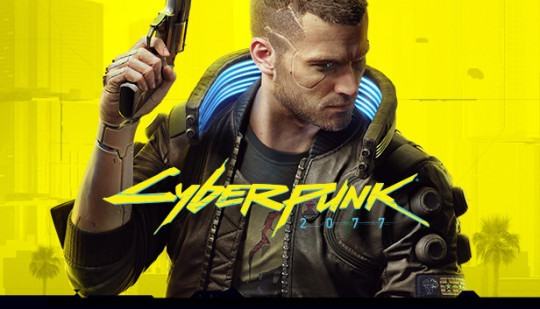
Cyberpunk 2077 - BAD
It kind of goes without saying. 90% of this was an absolute disaster and I think it would be fair to say that the release destroyed nearly all good faith in this property. CD Projekt RED were up to some absolutely chronic piss-taking here with the endless yellow memo posts on twitter pushing the games release date so far back, it was beginning to give Duke Nukem Forever a run for their money. All the while, they were absolutely grovelling for forgiveness from the social media community and praying that they would trust their judgement in delaying it.
But low and behold, the game released too early and it was so crap that it had to be removed from the PlayStation Store because of its poor port on the previous consoles - a treatment reserved only for Tony Hawk’s Pro Skater 5 and Blacklight: Tango Down. The developers also asked people to refund the game if they didn’t like whilst simultaneously promised the game would be fixed later, adding a unique stick/twist element to gaming consumerism which is at least one thing they innovated. By all accounts from the gaming 1% who own the new consoles that Cyberpunk 2077 is just ‘alright’ and nothing more. Oh well. See you for The Witcher 4.
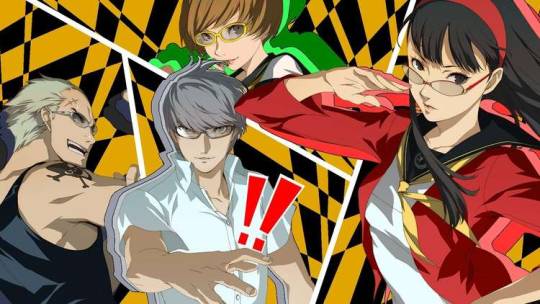
Persona 4 Golden is Ported to Steam - GOOD
This is kind of a personal one but Atlus took everyone by surprise by announcing that they would put their crown jewel on the Steam store in the summer. One of the foilables of Persona 4 Golden is that you can only play the game on the Playstation Vita which did exist, yes and despite no-one owning the system, it still did better than Persona 5 The Royal which is kind of embarrassing.
It released with a sound issue that only occured during cutscenes but otherwise it was a big success, racking up 500,000 users before the end of the year. New people got to experience the franchise, streamers didn’t need to use a Playstation TV or an emulator to broadcast which is... something I guess. It’s not a massive deal this one; I just really like the game and I like that people are still interested in it. It makes me happy.

Microsoft purchases ZeniMax - GOOD
This year, Microsoft did the unthinkable and actually bothered their arse to obtain a profitable license. ZeniMax Media owns Bethesda and its subsidiaries and therfore, all of their games and intellectual properties which is now overseen by Microsoft. This obviously set the internet ablaze with dreams of The Elder Scrolls, Fallout and Doom being exclusive to the new Xbox which was yet to roll out the door at this point. A huge coup for sure however, it didn’t quite work out like that so it got swept under the rug.
It can only be good for both parties though because it’s no secret that Big Beth are short of a few quid and with their recent output, it wouldn’t take a clairvoyant to see that they were fast-tracking their way to a bit of a sticky situation. So they’ve benefitted from the deal and maybe some of their titles could do with being bolstered. Microsoft have benefitted at the very least by having the ball in their court in some respects if they want to do some kind of exclusivity deal. You would have to assume good things could come out of this for the Xbox consumer. That is, if you enjoy Skyrim, Fallout, Doom and Wolfenstein. As someone who doesn’t really care, I say help yourself.

The Last of Us Part II - BAD?
It’s a mixed bag this one, the whole saga. From The Last of Us Part II being discussed and being largely rejected by a lot of people to it actually being announced to mysteriously universal excitement then everyone forgot about it for a long time. Several conventions later, developer(s) infuriated with being crunched took it upon themselves to ruin the entire game by leaking the story and the graphics which made everyone angry and/or laugh at the ridiculousness of it all. Stories came out about the head-cheese Neil Druckmann and his attitude to direction as well as his moral compass, casting aspersions on the progressive trans character in the game. This is before I’ve mentioned the sex scene. HOWEVER, this was all in 2019.
When it released, it was “review-bombed” either by people who were motivated by transphobia or people who thought the plot twist was stupid or maybe both. Either way, it was demonstrously unfair that the game was pre-judged especially seeing that journalists were not even allowed to talk about it. Embarrassing that gamers had to discover the concept of the embargo this way but there you go. This is where this bit ends unfortunately because I’ve never played it and probably never will. What leaves this in the bad column is that never has such a high-profile project been released so shoddily and so messily (aside from the gameplay which I can’t possibly comment on). We’ve had Duke Nukem Forever and Colonial Marines but this is a generation-defining title, supposedly.
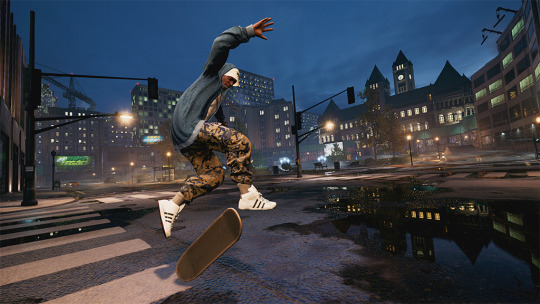
Tony Hawk’s Pro Skater Returns (properly) - GOOD
Another personal one for me. This intellectual property is one of my favourites ever and it’s not just a game series that I “enjoyed as a kid”. Every so often, I break out the PlayStation 2 and do a playthrough of a Tony Hawk game. Needlessly to say, I hated Tony Hawk’s Pro Skater HD and any right-minded person would but their most recent effort at remaking Pro Skater 1 and 2 is just great, I cannot get enough of it. Essentially, it’s exactly the same but with all the modern nooks and crannies that come with modern gaming like a party system etc.
I could go on and on about this game and how it’s great. The levels look amazing, the skaters look amazing and the gameplay is the classic familiar style that we’re all used to. Nothing is really tampered with or missing from it apart from it being no longer the early 2000′s so the rough edges of skateboarding culture have rounded to more of a drinks-coaster shape but whatever, I still love the game.

Free Games Galore - GOOD
I’ve saved the best for last. This year meant a tonne of free games for one and all - especially if you were a PC user. Xbox Games Pass synced up with PC users so that if you could play all the free games you could do on the Xbox over on your desktop as well which invited the entire PC market to purchase the subscription of a dollar for three months of free games. This is before Epic Games announced that they were doing a free game a month on their store which required no subscription fee and they were all bigguns to boot. The likes of GTA V and Borderlands 3 to name a couple. You could look at it as good will gestures or conglomerate games markets chipping pennies from the profits of game devs for consumer points but it meant that a lot of people had a lot of opportunities to play ground-breaking titles that they had never played before or to discover indie gems like Hollow Knight or Ori and The Blind Forest.
It should be noted that PlayStation’s offering in this space of free games was the Uncharted Collection, a game which has already been made free on PS+ and aside from that, every bastard has played it already. So it wasn’t great if you were a PlayStation 4 user like myself but I can appreciate that a lot of new games were played during this trying time of everyone being off work and with nothing to do. As an aside, streaming has now been more popular than ever this year and a lot of games have had resurgences including the aforementioned Among Us and it could be seen as a nice marketing trick to inject all these PC players with new games to play on stream if they so choose to. Either way you look at it, more games were played in 2020 than ever before and begrudgingly, we have to thank Microsoft and Epic Games for that.
What a chilling conclusion that is.
#games#video games#gaming#games blogging#game development#game dev#game developers#video game publishing#2020#free games#among us#tony hawks#Cyberpunk#cyberpunk 2077#persona 4#persona 4 golden#tlou#tlou 2#the last of us#mixer#bethesda#pro skater#persona
5 notes
·
View notes
Text
Latepost has learned from several independent sources that Didi has started the project, led by Yang Jun, vice president of Didi and general manager of Xiaoju.He is also the chief product officer of D1, a customised ride-hailing service launched jointly by Didi and BYD, and the team has already started poaching people from car factories.However, Latepost has not yet learned the specific form and path of Didi's car construction.
Zhu Jiang, former vice president of user development at Nio, is likely to join Didi, a person familiar with the matter said.Zhu Jiang has many years of experience in automobile industry, and has worked in BMW Brilliance, Lexus, NIO, Ford China and other companies.
In addition to the new developments, Latepost has learned from inside Didi that its self-driving subsidiary plans to try new paths beyond its own research and start a new self-driving truck business.
Didi declined to comment.
Didi has several car-building projects in the works
In November 2019, Didi and BYD set up a joint venture, Beautiful Chuxing (Hangzhou) Automotive Technology Co., with BYD holding 65% and Didi 35%, and BYD as the controlling shareholder.The two subsequently launched a customized ride-hailing service, D1, in November 2020. At that time, Didi was also directly involved in the cooperation with Xiaoju.Didi's car service business started in 2016 and became Xiaoju's car service independently in 2019. At present, it includes Xiaoju youche (car rental platform), car maintenance, second-hand car, charging and refueling.Didi wants to focus on renting from the front end to the back end, with services such as maintenance, insurance and energy.
In June 2020, Didi Autopilot, a subsidiary of Didi, announced a partnership with BAIC, in which the two sides will jointly develop high-level self-driving customized models for RoboTaxi (self-driving taxi) operations.
And this time Didi started to build a car, is likely to be along the D1, the further exploration of customized online car hailing.
Analysts in the industry say Didi's new car plan will be different from the car-company-dominated approach it took when it launched the D1.This time Didi will be more capital-intensive and more engaged.This echoes Didi's message when it launched D1, which stressed that it was the "first" custom ride-hailing service.
According to the plan previously mentioned by Cheng Wei, founder and CEO of Didi at the D1 launch, Didi's customized ride-hailing service will continue to iterate, and by 2025, the customized version of D3 will be popular on Didi's platform, with more than 1 million units. By 2030, the D series aims to eliminate the cockpit and achieve full driverless driving.
On the other hand, although Didi has made more efforts to build cars, according to industry analysts, it is not possible for Didi to set up a wholly-owned subsidiary to build cars like Xiaomi, because its capital may not be able to keep up with it, and its model may be lighter than Xiaomi's.
One investor believes that it is a more economical choice for Didi not to build cars by itself. At present, the production capacity of car companies is too large, and Didi, as a big customer, can completely eat a part of the upstream profits.But building your own can tell a better capital story and keep drivers further on the platform.
Didi has partnered with third-party car rental companies in many places, allowing drivers without cars to hire cars to join Didi's platform to pick up customers.But aggregated car-hailing platforms such as AutoNavi, Meituan and Hello are also courting local car rental companies to compete with Didi.By providing its own operating vehicles, Didi could reduce its reliance on third-party rental companies and reduce the cost of securing drivers.
Whether it was D1 last year or the new plan now, there is a clear logic behind Didi's entry into the custom ride-hailing service.Currently, the cost of the online car hailing market based on fuel models is too high, which directly leads to the limited scale of the online car hailing market and low profit.
Customizing ride-hailing is one way for Didi to reduce costs and improve operational efficiency.In 2018, Didi and Ideal had previously planned to cooperate in this area and set up a related subsidiary, JudianChuxing, in which Didi held a 51% stake and Ideal 49%.
However, Latepost previously reported that Didi's cooperation with Ideal has been terminated and that Judian plans to become an independent OEM-travel company with new strategic shareholders.
Since then, Didi has established joint ventures with BAIC, BYD and Volkswagen.But Didi's tie-up with Volkswagen and BAIC has yet to materially develop.
Li Xiang, founder of Ideal Auto, said at the time that the future evolution of the mobility market will be in line with the logistics industry standard, which means the lower the cost the better and the more efficient the better.The partnership between Ideal and Didi is aimed at further reducing costs on the premise of safety.According to Li Xiang's calculation, the cost of the new car may be 10~15% more expensive than that of the ordinary fuel-powered car, but the battery life will double, and the amortized cost per kilometer will drop 0.5~0.6 yuan, or nearly 20%, compared with that of the fuel-powered car.
What's more, customized online car hailing can also improve user experience and produce cars that are more suitable for driverless driving, making preparations for the landing of driverless driving in the future.
As a result, custom ride-hailing could also become a connection point between Didi's ride-hailing platform service and its Robotaxi business, which its self-driving subsidiary is building up.
Didi's self-driving business may also be changing
In addition, a person close to drops autopilot told the late LatePost drops autopilot company is currently in the research of automatic driving route, is also considering to try the second route, the route may be combined with vehicle road new "Robotaxi ping's", namely the side access Robotaxi enterprises with operational vehicles, access to the passengers.
But given that Didi itself is doing Robotaxi, if it takes this route, the short-term drag will be persuading other Robotaxi companies to work with Didi.Currently, Chinese companies such as Baidu, Xiaoma Zhixing and Wenyuan Zhixing all have their own taxi-hailing apps, while AutoX can use AutoNavi to take taxis. The biggest challenge for the autonomous driving industry is technology and product maturity rather than competing for passengers.
Meanwhile, Didi Autopilot has also started experimenting with a self-driving truck project, which is being led by Didi Autopilot CTO Wei Junqing, confirmed by Late Latepost.
On Friday (April 2), two days after the official announcement, the Huaxia Alumni Association, attended by many entrepreneurs and investors, was held at the Xiaomi campus. A photo of Lei Jun with Wang Chuanfu, Li Bin, Li Xiang and He Xiaopeng was widely circulated.
Cheng Wei, the CEO of Didi, was also at the table with Li Xiang and Li Bin, but in the group photo, Li Xiang were on stage and Cheng Wei and Yang Jun were in the audience.
Mr Cheng has previously said Didi does not build cars and is not seeking to become the biggest car operator in the future.Didi's core competence is to serve its users and car owners well, and to keep investing and making breakthroughs in big data and technology.
Mr Cheng may have to eat his words. He and Didi will also be in the car building business.But from the business logic, it is good news.
Didi has more on its plate than just building cars.Didi plans to go public this year. In order to achieve better market valuation, Didi has carried out more diversified business expansion, including "Orange Heart Preferred", which is now a key business community group purchase.Community group-buying is also a capital-heavy track, and brings together the giants with the strongest financial strength at present -- Meituan, Pinduoduo, Ali and Jingdong all regard it as an important direction.
Bloomberg had previously reported that Didi had plans to inject about $3 billion into its preferred unit.Didi is also working with financial advisers to raise about $1bn from outside investors.
More deeply involved in and led the launch of customized online car hailing, into the self-driving truck, into the community group buying market, Didi will be listed this year, the new moves continue.Didi, which has always been considered by the market to be relatively cautious in making decisions, showed a sharper ambition on the eve of its listing.
Edit/Viola
Risk note: the author's or guest's opinions above all have their own specific positions. Investment decisions should be made on the basis of independent thinking.Futu will do its best but cannot guarantee the accuracy and reliability of the above information and will not be liable for any loss or damage caused by any inaccuracy or omission.
2 notes
·
View notes
Text
ID:123700
Date: Sunday, November 15, 2020
Words: 350
The evolution of the automobiles industry through time
The automobile was invented and perfected in the late nineteenth century for the first time, in Germany and France in particular. The automobile is known as an automatic self-propelled vehicle designed to transport passengers on the ground. It typically has four wheels, and an internal combustion engine fueled by gasoline, known as the car. How has the auto industry developed over time?
In the late eighteenth century, it was the first steam-powered car as it had three wheels and a speed of only 3 mph. The automotive industry quickly developed with the introduction of the internal combustion burner. The first gas-powered car was invented by Karl Benz in 1885, who received a patent the following year. Where the car had three wheels, while the four-wheeled car was introduced in 1891.
automobiles in their early days did not contain front windows or doors, and they also did not contain turn signals, which is different from what we see now. But the invention of the gas-powered car was the beginning of the development of vehicles, specifically in America. Where Americans dominated in the first text of the twentieth century on the auto industry. Where Henry Ford invented the techniques of mass production, and many large companies appeared in America, such as Ford and Chrysler. After that, automobile production rose in Japan and Europe.
Later on, new features appeared for cars, such as seat belts, rearview mirrors and windshields, but the turn signals did not appear until 1939. Then cars appeared with other new features such as seat heating and cruise control, while airbags appeared in 1973. In the early 1990s, keyless entry systems, electric doors and windows, and roof hatches began to appear.
Since 2010 there has been a growing focus on auto development. The manufacturers also paid attention to safety systems, and the automatic brake appeared, the autonomous vehicle system was developed, and many advanced systems such as the navigation system appeared. Many luxury cars have appeared like the Maybach, which nowadays have the advantage of self-driving and contain a lot of technology and comfort features. For example, the car seat massage feature.
References:
1- https://www.britannica.com/technology/automotive-industry
2-https://www.google.com/amp/s/www.history.com/.amp/topics/inventions/automobiles
3-https://www.nationalgeographic.org/encyclopedia/automobile/
4-https://www.infoplease.com/encyclopedia/science/tech/terms/automobile/development-of-the-automobile
#Mass2113_10 #SQUPR
3 notes
·
View notes
Link
For more than a year, Los Angeles-based streetwear designer Tremaine Emory had been working with Converse on a red, green and black sneaker inspired by Jamaican political activist and Black nationalist Marcus Garvey’s Pan-African flag and artist David Hammons’ 1990 work “African-American Flag,” an original of which was acquired by the Broad museum in Los Angeles last year.
Emory’s brand, Denim Tears, tells the story of Black people in the United States starting in 1619, when the first documented enslaved Africans arrived in Virginia; according to the designer, the brand’s logo, a cotton plant, is a direct reference to slavery. That’s why the proposed packaging for his Converse sneaker collaboration depicts a coffin covered with Hammons’ flag and a cotton wreath, as a tribute to Black Americans who have died under unjust conditions. The image is based on an art installation, “A Proper Burial, Thanks America,” that Emory debuted in London last year.
However, in late May, as protests spread across the country after George Floyd’s death in police custody, Emory announced on Instagram that he and Denim Tears couldn’t go forward with the partnership until Converse’s parent company, Nike, went beyond its plan to donate $40 million over four years to support the Black community. (Michael Jordan, through his Nike subsidiary Jordan Brand, is donating an additional $100 million over 10 years.)
Emory called the move by Beaverton, Ore.,-based Nike, which reported $37.4 billion in revenue last fiscal year, a very expensive Band-Aid. He said he wanted to use his voice to push Nike to look inward at its own record on diversity and inclusion.
“It’s accountability,” Emory said in a phone interview. “It’s about Fortune 500 companies and how they are run under the guise of white supremacy and patriarchy and how I take accountability, that I need to see the steps — and brands that I work with dispensing that — or guys won’t work with me.”
In recent months, nearly all major industries, including entertainment, journalism and sports, have been forced to confront how closely their statements opposing systemic racism align with their treatment of Black and brown employees. The fashion industry, which has frequently been criticized for cultural appropriation, instances of blackface and a lack of diversity, is no different.
According to a count by trade publication Women’s Wear Daily, Black people make up only 4% — 19 out of 477 members — of the invitation-only Council of Fashion Designers of America, whose new chairman is Tom Ford. In an email to The Times, a CFDA spokesman said, “The CFDA does not record nor require members to state their race upon application, but it is estimated that members of color make up approximately 25% of the total membership.”
June 8, 2020
In anecdotal comments, Black streetwear designers from L.A. to New York told The Times that their subset of the fashion industry is no different.
“You can’t ignore the fact that there aren’t many Black brand owners in the streetwear space,” said Scott Sasso, who founded 10.Deep in 1995 while he was a student at Vassar. “And [at] some of the biggest companies, I don’t know if they’ve even had Black employees.”
Streetwear brands such as Denim Tears and 10.Deep offer casual clothing, primarily for men, that blend the styles of various subcultures, including hip-hop (as popularized in the 1990s by brands such as FUBU, Walker Wear and Phat Farm) as well as surf and skate motifs. It’s an identity that can be found in the clothing from brands such as Supreme and Stüssy. Instead of offering widely available, mass-produced products, streetwear brands tend to offer limited-edition drops for consumers who hear about companies through social media or by word of mouth.
Although Black style — from hip-hop to sneaker culture — has played a major role in shaping the fashion industry while bringing new designers and brands to prominence, Black fashion professionals and streetwear brand owners said in interviews with The Times that the clothing industry has failed to elevate and promote Black creatives in a way that reflects that influence.
Several designers also questioned the sincerity of corporations promising to invest in Black communities. They reflected on their own experiences trying to explain Black art to predominantly white company leaders.
Chicago-based designer Joe Freshgoods started selling T-shirts in high school and has been selling his designs out of Fat Tiger Workshop, the streetwear retail hub he co-owns, since 2013.
“I feel like a lot of these brands are in these boardrooms having these talks about how to fix this or how to just clean up their mistakes real fast, and it’s just like, ‘Hey, let’s just fill in the blanks real quick and see if this will make them happy,’” Freshgoods said.
He said he tried to include the logo of the Black Panther Party on a design for an Oakland-themed collaboration with an apparel brand last year. The company’s legal department rejected his proposal. At the time he went along with it, but now he’d push back, he said.
“A lot of Black collaborators are the reason why a lot of brands are super successful right now, so that’s a lot of power to have,” Freshgoods said.
Emory, who has partnered with New Balance and Levi’s, called on Nike to stop supporting Republicans while President Trump is the party’s leader. He also wants the company to release more information on its record of hiring Black employees and assist in “the defunding and total reform of all the police departments across America.”
Since his initial Instagram post in June, Emory has spoken to Converse Chief Executive G. Scott Uzzell or Uzzell’s team about a half dozen times over the phone or in video-conference meetings. In those discussions, Emory said the company acknowledged it hasn’t done everything it could in terms of creating a diverse corporate structure and laid out its hiring plan, especially in its executive suite. The designer said he discussed current initiatives at Nike to invest in Black communities and to address systemic racism and police brutality. “They want to get involved in all that, and we will see,” he said.
The release date for his red, black and green Converse sneaker has been moved up from February to October, ahead of the November election. Emory said the marketing for the shoe will focus on promoting voting. The shoe will be available in North America, Europe and online for $95 to $100.
“We respect and encourage the efforts of any collaborator or athlete we work with to raise their voice against racial injustice,” a Converse spokesperson said in a statement to The Times. “We have spoken with Tremaine and look forward to working through these issues together.”
At its core, streetwear is about authenticity and the personal connection between consumers and the designers and labels they love.
The push by larger brands and corporations — specifically in the fashion industry — to meet the current moment with statements, donations and new initiatives is in direct contrast to what many Black streetwear designers have been doing since the inception of their brands. Those designers have been hiring diverse staff, speaking up about political issues and infusing their works with references to Black culture.
“Now I feel like everybody’s rushing to make some type of relevant shirt or make some relevant message on their Instagram,” said Zac Clark, a Black designer who started his brand, FTP, while in high school in Los Angeles. “To me, a lot of this stuff right now seems very unnatural and just forced from a lot of these brands, so they won’t get ‘canceled.’”
Olivia Anthony, the designer behind the Livstreetwear brand, said the turning point for her New York-based company was her 2017 My Love Letter to Our Culture collection, which paid tribute to Black trends of the ’90s — think long nails, grills and slicked-down baby hairs — that were largely considered unfashionable until they were adopted by other races.
“It was so beautiful, but it was looked down upon,” said Anthony, adding that she wanted her brand to reflect how those Black trends, now featured in magazines including Vogue, have been “shown in a different light.”
Kacey Lynch said he created his South L.A.-based streetwear company, Bricks & Wood, after years of working at streetwear brands where he felt Black representation was missing.
“They wanted a lot from us, but they didn’t want to do the work, what it took to understand us,” Lynch said of his past employers. “Whether that’s Black culture, South-Central, minorities … wherever the cool came from, they all wanted it but they didn’t really know how to identify with it.”
In May 2019, fashion website Hypebeast and Strategy&, a consulting firm in the PwC network, released its Streetwear Impact Report, based on interviews with more than 40,000 Hypebeast readers and 700 global industry insiders. The survey found that 70% of respondents said they care about social issues, 59% said brand activism is important and 47% said they would stop shopping from a brand because of inappropriate behavior.
“It’s fine as a starting point for corporations to say, ‘This is what we stand for and this is what we believe,’” said Elena Romero, a fashion journalist and author of 2012’s “Free Stylin’: How Hip Hop Changed the Fashion Industry.”“But that’s not going to be enough.”
Romero, an assistant professor at New York’s Fashion Institute of Technology, said companies likely will face questions over where they invest their profits, the diversity of their staff and how they’ve helped build the communities from which their dollars are coming. She said many companies will realize they’ve fallen short because the answers to those questions weren’t a priority until their profits were at risk.
“Now the consumer is saying, ‘You can’t fool us anymore,’” she said. “If you’re not authentic and truly supporting the very same things that these young people believe, your business will suffer.”
The result has been an industrywide push to make those investments now but also to make amends for past inaction. After Black Adidas employees criticized the company’s response to racism, Adidas announced June 9 that it would add more diverse staff, start a scholarship program for Black employees and invest an additional $20 million over four years in programs that serve the Black community. A day later, Adidas upped its $20 million pledge to $120 million. (In addition to those changes at Adidas, the company’s global head of human resources, Karen Parkin, resigned at the end of June after facing criticism for her handling of racial discrimination.)
Adidas also apologized for its past silence. “For most of you, this message is too little, too late,” a tweet from the Adidas account read. “We’ve celebrated athletes and artists in the Black community and used their image to define ourselves culturally as a brand but missed the message in reflecting such little representation within our walls.”
In the broader fashion community, various organizations and members of the industry have offered different strategies for creating a more inclusive environment. Aurora James, a New York-based creative director, started the Fifteen Percent Pledge, which calls on companies to provide at least 15% of their shelf space or contracts to Black-owned businesses.
After the CFDA announced its plan to promote diversity, a group called the Kelly Initiative called for the CFDA to adopt its proposal to conduct and publish a census of diversity in the industry, audit its recruitment practices and release an annual list of top Black talent, the Kelly List. The initiative is named after the late Patrick Kelly, a Black fashion designer who rose to prominence in the 1980s with work that played with Black cultural symbols and racial stereotypes.
April Walker, whose New York brand Walker Wear was worn by ’90s hip-hop stars including Method Man, Tupac Shakur and the Notorious B.I.G., stressed that Black designers need to look outside the fashion industry for success by collaborating, mentoring and sharing resources with their counterparts.
“We just need to not look for the fashion industry, as it’s been very oppressive for the last 30 years, to be the end-all, be-all for our opportunities,” she said, “but to create our own.”
Among streetwear companies, the effort to fight systemic racism in the country and the fashion industry has been on an individual basis, with brand owners of all races deciding how much they’re willing to give back and how comfortable they are using their platforms to discuss and condemn racism.
For some, that means speaking up in solidarity with the Black community. Bobby Kim, cofounder of the Hundreds, a Vernon-based clothing brand, teamed with Pharrell Williams’ brand Billionaire Boys Club to raise money for Black Lives Matter and the Black Mental Health Alliance with a shirt that was available for 48 hours. After the Fairfax shopping district where his shop is located was vandalized in late May, Kim, who’s Korean American, defended the right to protest.
In an interview, Kim said, “If you have been given a lot of money, and especially if that money has come by way of participating, contributing, or even stealing or borrowing from Black culture, then you — more than anybody else right now — need to tithe, need to pay up, in a sense, in order to reflect how influential Black culture has been in your career and your profitability as a company.”
Sasso’s 10.Deep stopped selling its regular collection for most of June and instead offered a new line of 10.Deep products to draw attention to activism against racial injustice and police brutality. The profits went to national bail funds for protesters.
“Streetwear, in its truest form, is about shooting yourself in the foot as often as possible but also just doing what you think is right,” Sasso said.
He said he was drawn to streetwear because it was a multiethnic community of different countercultures, a blend of the skate, surf, hip-hop and graffiti scenes, with a dash of punk rock, united by an exclusive knowledge of where to find and buy certain brands.
However, he has noticed a shift among streetwear consumers. For some shoppers, it’s not about the community. It’s just about the clothes.
He said he lost “several thousand” social media followers after he posted about Black Lives Matter and has received comments asking him to just stick to fashion.
“My thought is: If you want just some regular clothes, go buy Banana Republic, go buy Levi’s,” he said. “Those are companies that aren’t gonna take political stances. They’re providing basic stuff. This space is about a culture. If you want to participate in it, this is what it’s about.”
#@latimes on instagram#black streetwear brands#bobby kim#blm#nike#denim tears#cfda#elena romero#how hip hop changed the fashion industry#streetwear blog#olivia anthony#aurora james#fifteen percent pledge
2 notes
·
View notes
Link
via Politics – FiveThirtyEight
Sen. Bernie Sanders almost certainly won’t win the Democratic nomination after his string of defeats in recent primaries. So the questions around how and when Sanders will end his campaign aren’t really about electoral math anymore, but are instead connected to deeper questions about policy, the Democratic electorate and Joe Biden and Sanders’s personal goals.
These deeper questions essentially are: Does Sanders have any specific goals that he wants — such as Biden taking up one of his major policy ideas — that he could essentially trade with Biden in exchange for dropping out and endorsing the former vice president? Does Biden, who is now racking up endorsements and winning primaries by huge margins, really need to negotiate with Sanders at all? Does the bloc of around 30 percent of Democratic primary voters that have backed Sanders represent a clear constituency that he actually leads, or will Sanders’s supporters be unenthusiastic about Biden even if Sanders embraces him? Will most of Sanders’s supporters vote for Biden in a general election simply to get President Trump out of office, or does Biden need to accommodate them in some way? And are Sanders’s supporters actually open to any accommodation beyond Sanders being the Democratic nominee?
I can’t really answer any of these questions confidently, and despite what you will read or hear on TV, I’m not sure anyone else knows the answers to these questions either. But one way to think about this is through history. Every competitive nomination process ends with a winner, at least one person who can claim to be the runner-up and some bloc of the party that has lost. So here are some models for how the Biden-Sanders primary could be resolved. These are ordered from the least to most favorable for Sanders:
Sanders and the left get basically nothing
Parallel: The 2000 Democratic primary between then-Vice President Al Gore (winner) and former Sen. Bill Bradley.
Bradley didn’t win a single caucus or primary and earned just 21 percent of the popular vote, so he was obviously in a weaker position than Sanders is now. That said, many Democrats view Trump as an existential crisis and now America has a crisis (the novel coronavirus) that could last until November or beyond. With those concerns, Sanders may have less room to get much from Biden because the growing pressure to leave the race and back Biden may at some point become too strong for him to continue.
So Sanders could get nothing, according to Mark Schmitt, who was a top adviser on Bradley’s 2000 campaign. “Not ‘Godfather II’ nothing, but nothing wrapped in a lovely bow of recognition and respect,” Schmitt said.
Sam Rosenfeld, an expert on party politics who teaches at Colgate University, said, “Biden’s victory came so quickly and with so little in the way of extended trench warfare that it’s true that he likely feels less need to assuage Sanders substantively than HRC [Hillary Clinton] did four years ago.”
In this scenario, Biden would pick a running mate, like Sen. Amy Klobuchar, who is similarly resistant to more left-wing ideas. Biden would basically refuse to adopt any of Sanders’s policies and might block their insertion into the Democratic Party’s official platform at the party’s convention, which is currently scheduled for July 13 to16 in Milwaukee.
Changes to the party platform
Parallel: The 2016 Democratic primary between former Secretary of State Hillary Clinton (winner) and Sanders; the 1976 Republican primary between then-President Gerald Ford (winner) and former California Gov. Ronald Reagan.
In 2016, Clinton and her allies allowed Sanders-backed provisions, including the abolition of the death penalty and a $15 minimum wage, into the party platform. A generation earlier, Ford and his camp used the platform to placate supporters of the more conservative Reagan.
The Democrats put some of Sanders’s less controversial ideas into the platform four years ago. In the 2020 process, he has pushed four far-reaching ideas in particular: a wealth tax, Medicare for All, the mass forgiveness of all student debt and free college for all Americans. The party platform in theory speaks for all Democratic candidates, even ones in swing districts. Those Democrats want to appeal to more moderate voters and are wary of Republicans linking them with socialism (and Sanders). So is there a compromise on the wealth tax or the mass forgiveness of college debt that satisfies Sanders’s allies and, say, more moderate House Democrats? That’s not easy to see. How far will Democrats go, with a GOP eager to cast the entire party as socialists?
Formal policy and/or appointment promises
Parallel: The 2016 Republican primary between Trump (winner) and Sens. Ted Cruz and Marco Rubio and then-Ohio Gov. John Kasich.
In May 2016, as some establishment Republicans were still thinking of ways to prevent Trump from winning the nomination, Trump released a list of people he would consider for Supreme Court seats. Neither Neil Gorsuch nor Brett Kavanaugh1 were on the initial list, but it was full of conservative legal figures. That list served as essentially a promise to the party’s establishment and conservative wings that Trump would appoint conservative judges to the bench, a key priority of the party. (He has followed through in spades.)
Biden has already promised to pick a woman as his running mate and a black woman as a Supreme Court justice — both attempts to placate other important constituencies in the party (black voters and women). And Biden recently announced that he supported tuition-free public college for Americans in households with incomes of $125,000 or less, moving toward Sanders’s position.
Will he go further? In theory, Biden could promise to appoint some prominent liberals to his administration (Sen. Elizabeth Warren, Sanders himself or some of their allies, for example). He could promise not to appoint people that liberal activists strongly dislike, such as former New York Mayor Michael Bloomberg or basically anyone affiliated with Facebook or Wall Street.
In terms of policy, could Biden, in a general election, commit to some kind of tax on the wealthy that is akin to a wealth tax? (The wealth tax is fairly popular with Americans overall.)
Daniel Schlozman, a political scientist at John Hopkins University who focuses on political parties, argued that the left will demand a major federal government response to the coronavirus pandemic if Biden is elected — so the disputes between the party’s left and center-left wings might look much different than they did during the Democratic primary.
“The big left asks of Biden will be on the scale and permanence of government interventions more than on any of the issues in the primary,” Schlozman said.
“Biden is very old and his instincts really do just stem from a different and much more cautious era for [Democratic] domestic policymaking,” Rosenfeld said. “That’s going to matter. That said, it’s important to note that the establishment has itself moved significantly since 2008 … The center of gravity on policy questions has shifted left.”
A leftist vice-presidential nominee
Parallel: The 1996 Republican primary between then-Sen. Bob Dole (winner) and conservative activist Pat Buchanan and businessman Steve Forbes; the 2012 Republican primary between former Massachusetts Gov. Mitt Romney (winner) and former Sen. Rick Santorum and former House Speaker Newt Gingrich; the 2016 Republican primary.
Some in the GOP’s more conservative wing doubted that Dole, Romney and Trump were sufficiently right wing in each of their respective primaries. So all three chose running mates — former Rep. Jack Kemp for Dole, then-Rep. Paul Ryan for Romney, then-Indiana Gov. Mike Pence for Trump — deeply trusted by more conservative Republicans.
This route would be complicated for Biden. In theory, the former vice president could excite the younger and more liberal parts of the Democratic base by picking a running mate who is not Sanders but shares many of Sanders’s positions. But few people close to, or as liberal as, Sanders are governors, senators or otherwise serve in positions that might make them natural candidates for the vice presidency. The most obvious figures, Sen. Tammy Baldwin and Warren, would require Democrats to remove a sitting senator and hope that the party can win a special election to keep that seat.
Let’s focus on Warren for a moment. She presents some obvious advantages for Biden in terms of her policy knowledge and high favorability ratings among Democrats. At the same time, Biden’s campaign messaging has been about electability. Would he choose a left-leaning senator from the Northeast like Warren over a more centrist senator from the Midwest like Klobuchar? Also, can a 77-year-old candidate pick a 70-year-old running mate? Can a Democratic Party that is nearly 40 percent Asian, black or Hispanic run an all-white ticket? Also, it’s not even clear that Sanders’s supporters would be super excited about Warren as the vice-presidential nominee.
Sanders is the vice-president nominee
Parallels: The 1960 Democratic primary between then-Sen. John F. Kennedy (winner) and then-Sen. Lyndon Johnson; the 1980 Republican primary between Reagan (winner) and former CIA Director George H.W. Bush; the 2004 Democratic primary between then-Sen. John Kerry (winner) and then-Sen. John Edwards.
The history of the second-place candidate becoming the vice-presidential nominee illustrates one of the challenges for Sanders — he’s not really viable for arguably the biggest prize a runner-up can reasonably expect. Being second on the ticket is potentially incredibly valuable — Johnson and Bush not only served as vice president but ultimately won the presidency themselves (Johnson obviously in very unusual circumstances). But it’s really hard to imagine Biden choosing Sanders, an even older white man (Sanders is 78), as his running mate.
I don’t think it’s worth trying to predict which of these precedents the Biden-Sanders race will follow — I would expect something more than nothing and less than the vice presidency. But this process is worth watching closely, because it won’t happen all at once. Sanders’s exit from the race, the Democratic convention and the time between Biden’s election (if he wins) and the start of his presidency are all potentially points of negotiation between Biden and Sanders, and the center-left and left wings of the Democratic Party. It will take some time to assess what concessions Sanders and the people who support him come away with.
19 notes
·
View notes